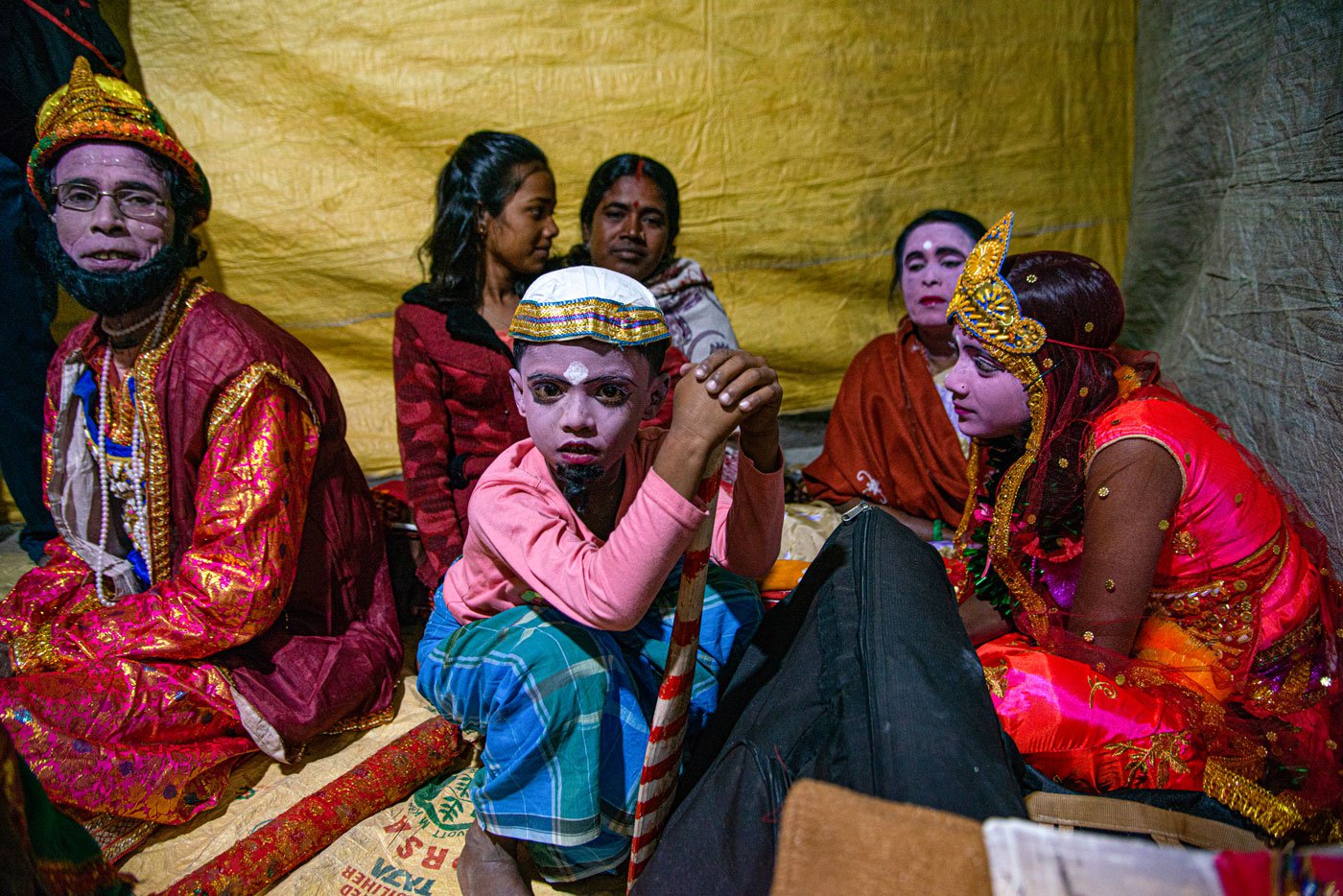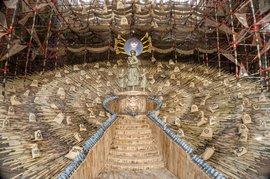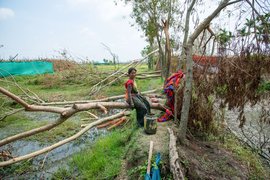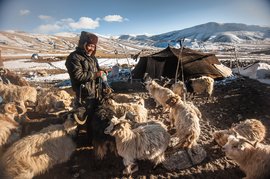It’s past 9 p.m. on a chilly January night and an audience of roughly 400 people are waiting for the show to begin. It was supposed to start an hour ago.
Suddenly, there is a bustle around the makeshift stage at the front. A loudspeaker fastened to a bamboo scaffold vibrates and a voice booms out: “We shall soon begin the verse drama dedicated to Ma Bonbibi… she who protects against all evil!”
Those wandering around Jawahar Colony village in Gosaba block, begin to settle down, keen on seeing ‘evil’ – unfriendly ghosts, snakes, crocodiles, tigers, bees – vanquished by goddess Ma Bonbibi in
atharo bhati-r desh
(land of 18 tides). This is the Sundarbans, the world’s largest mangrove forest of saline and fresh water bodies teeming with animals, plants, avian, reptile and mammal life. Here, tales of Bonbibi are passed on from generation to generation and embedded in the oral tradition of the region.
The green room, which is cordoned off from the street with curtains, is buzzing with audience and actors gearing up for the Bonbibi
pala gaan,
a musical drama. Large honeycombs and terracotta masks of tigers which are to be used as props in the show tonight, are stacked against the tarpaulin walls, awaiting their turn. The themes enacted are often closely related to people’s lives in the Sundarbans – home to
96
tigers in 2020.
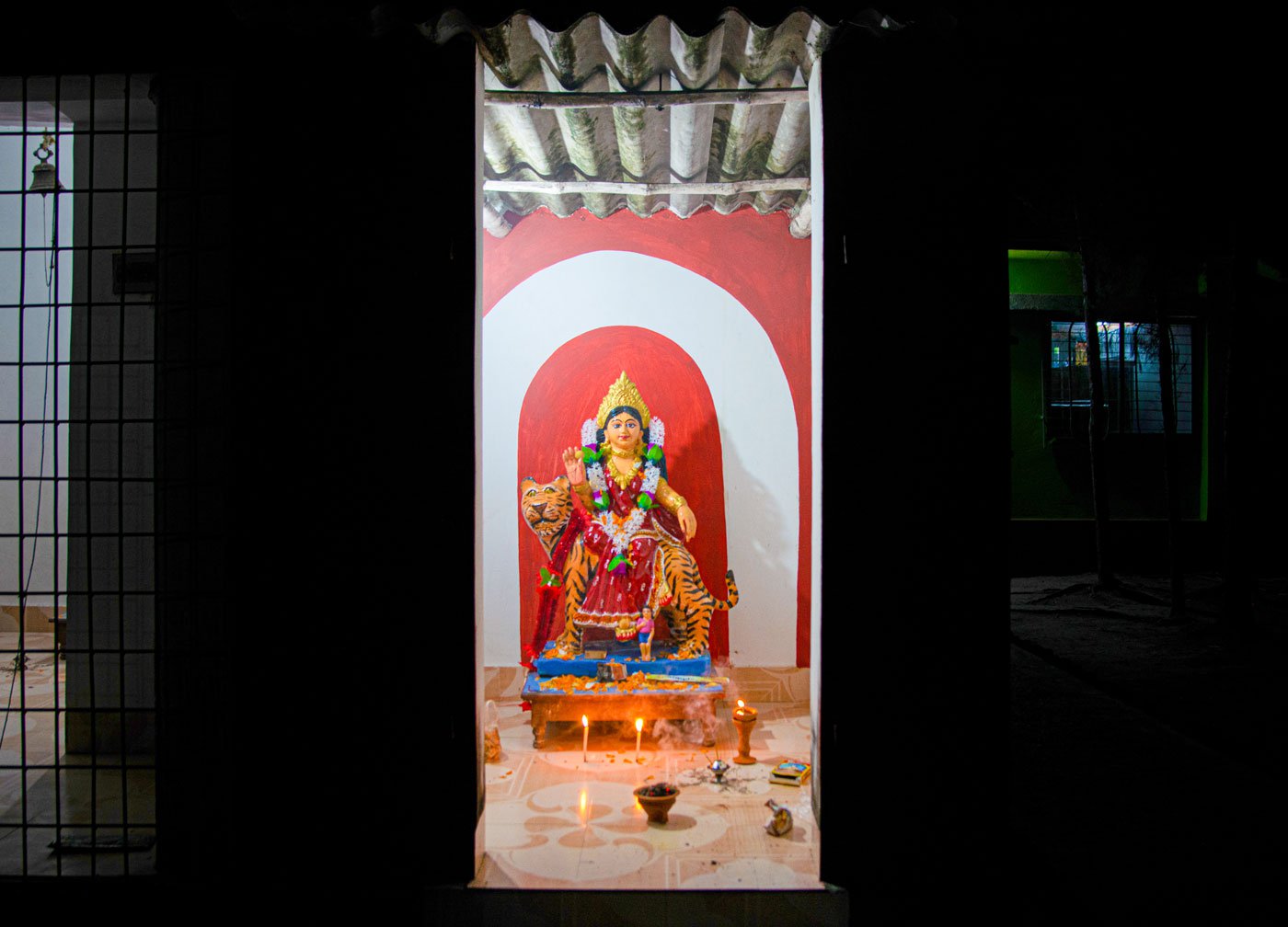
On the first day of the Bengali month of Magh (January-February), households dependent on the mangroves of Sundarbans pray to Ma Bonbibi for protection against tigers, bees and bad omens
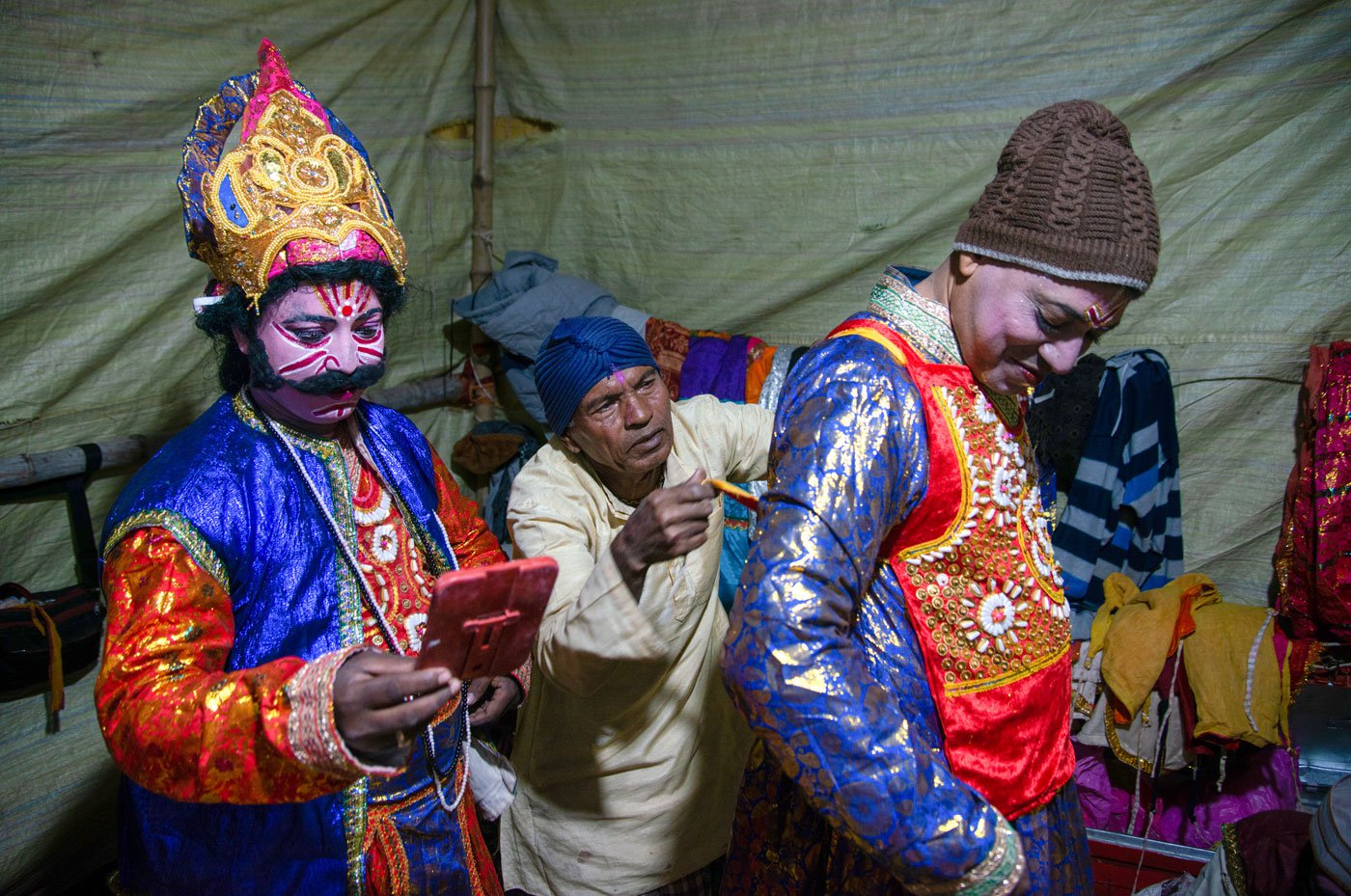
The green room is bustling with activity. A member of the audience helps an actor wear his costume
The actors – who are also farmers, fisherfolk and honey-collectors – are putting the final touches to their make-up and clothes. The sense of community is apparent as audience members wander backstage; some help actors rehearse their lines or with quick costume fixes in the green room.
A technician is fixing coloured filters on the spotlights and in a few minutes, the group performing today – Radha Krishna Geeti Natya and Bonbibi Jatrapala – will begin the show. The Bonbibi
pala gaan
, popularly known as
Dukhey Jatra
,
is performed on the first day of the Bengali month of
Magh
, overlapping with January-February.
An annual affair, people have travelled from across villages in Gosaba block of West Bengal’s South 24 Parganas to watch the Bonbibi pala gaan .
Nityananda Jotdar is the designated make-up artist of the troupe. He carefully places a colourful
mukut
(headgear) on one of the actors, meticulous to the smallest detail. His family has been engaged in
pala gaans
for generations now. Of late, though, it has been getting increasingly difficult to sustain himself with this income. He says, “No one can run a family with income from a
pala gaan
. I had taken up jobs in Bihar and Uttar Pradesh in the catering business there.” But the lockdowns during Covid-19 halted that income.
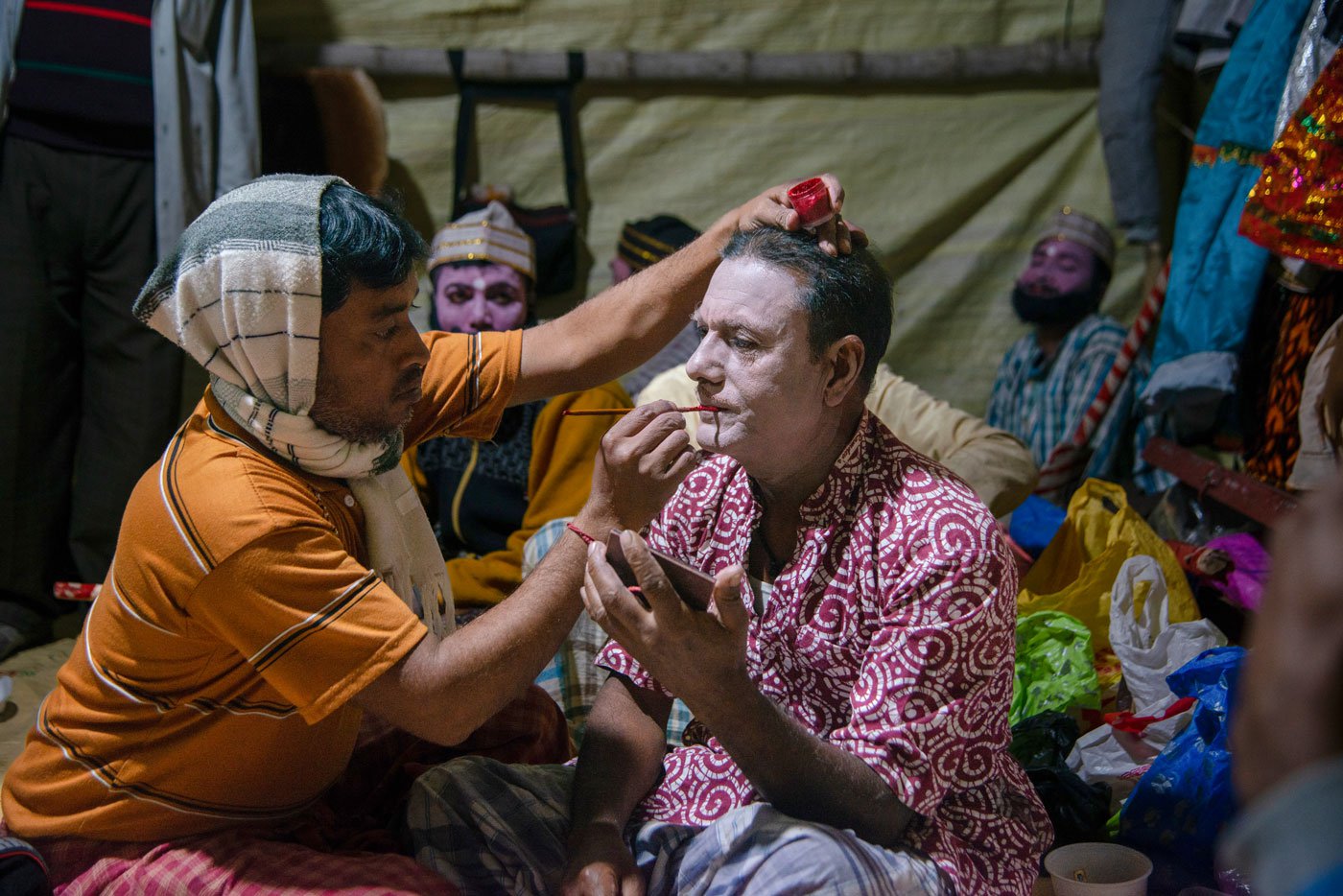
'I love transforming people into different characters,' says make-up artist Nityananda Jotdar
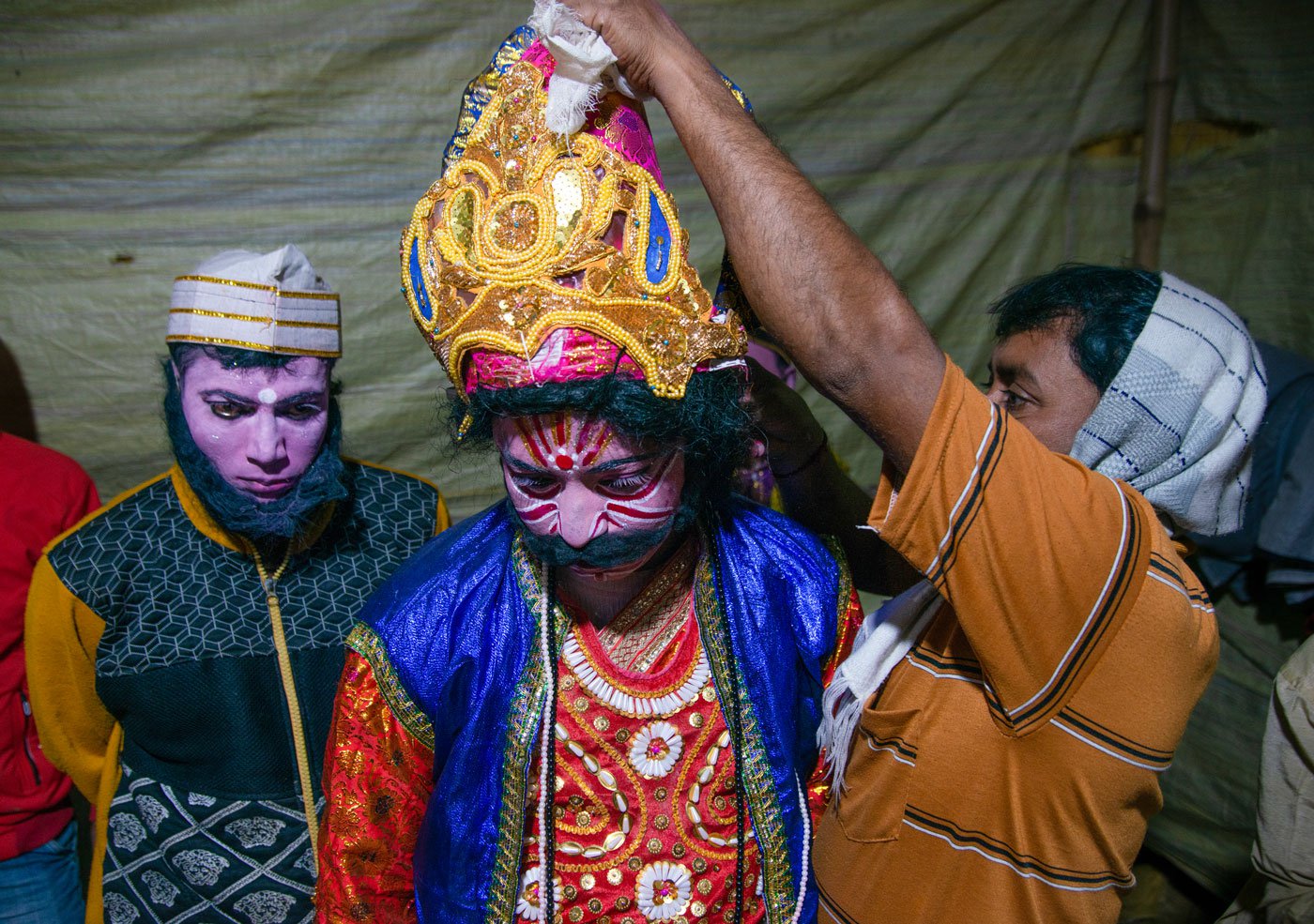
Nityananda puts a mukut on Dakkhin Rai, played by Dilip Mandal
Many members of the troupe spoke to PARI about the difficulties of running a household on the income from pala gaan performances. “Bookings for pala gaans have gone down drastically in the Sundarbans over the years,” says actor Arun Mandal.
Many
pala gaan
performers are migrating to cities in search of work, driven out by climate disasters, depleting mangroves and the waning popularity of folk theatres. Nityananda, now in his early 30s, takes up work as a labourer in construction sites in and around Kolkata. “I can't live without
pala gaan
,” he says. “So, here I am tonight, doing make-up for artists.”
With fees from such shows ranging between Rs. 7,000 and Rs. 15,000, the money individual actors earn from
pala gaan
performances is very little. “This Bonbibi
pala gaan
will pay 12,000 rupees. It will be distributed among more than 20 artists,” Arun points out.
Backstage, Usharani Gharani lines the eyes of a co-actor with kohl. “Unlike actors in the city, we carry all our make-up,” says the actor, smiling. A resident of Jawahar Colony village, Usharani has been performing in
pala gaans
for close to a decade now. Tonight, she is set to act out three different roles, including the lead character of Ma Bonbibi.
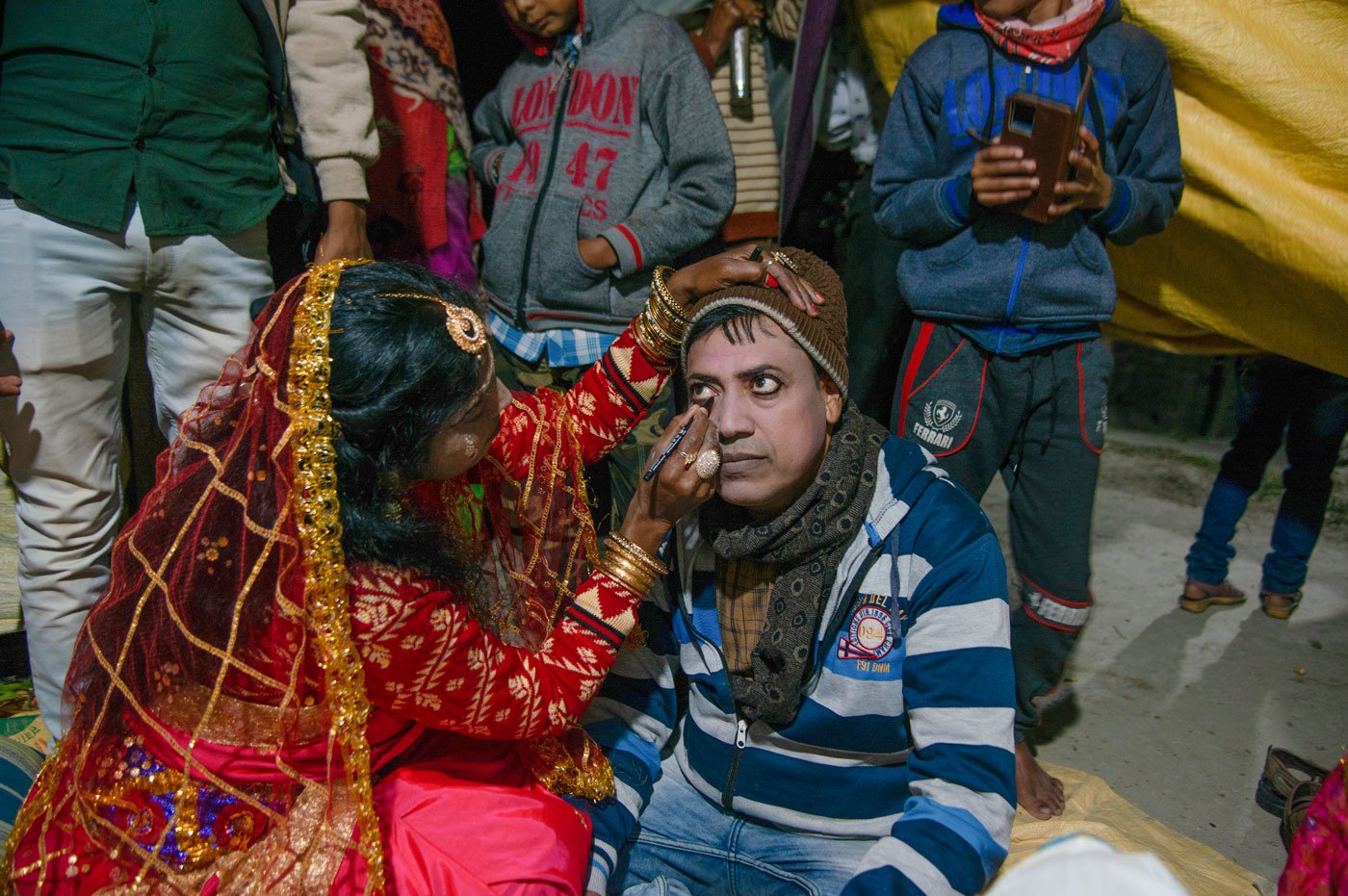
Usharani Gharani lines Uday Mandal’s eyes with kohl; the actor is playing the role of Shah Jangali, the brother of Ma Bonbibi
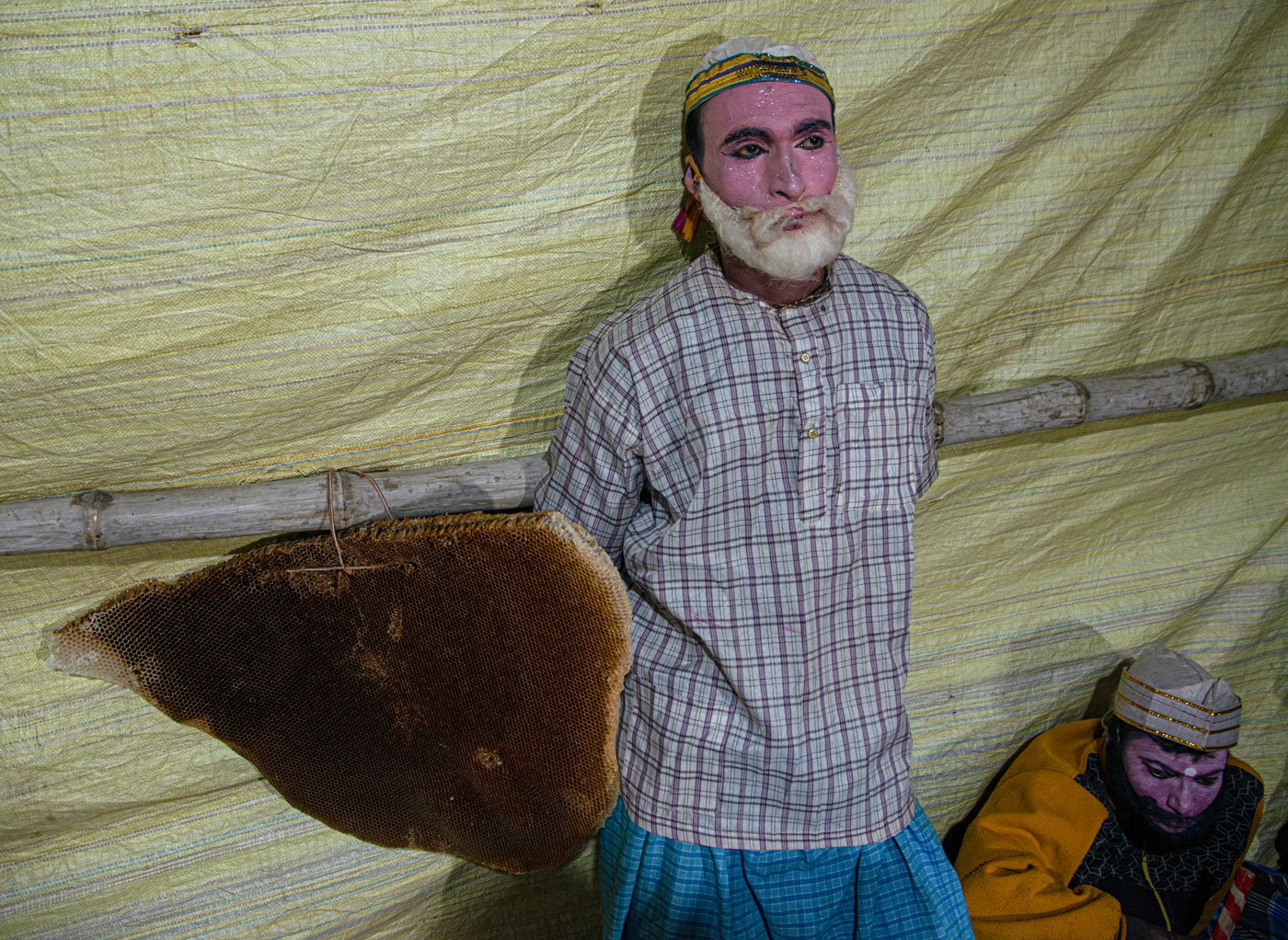
Banamali Byapari, a popular pala gaan artist of the Sundarbans, stands next to a honeycomb which is a prop for the show tonight
At the other end of the green room is Banamali Byapari. He has the easy air of a veteran actor about him. In Rajat Jubilee village the previous year, I saw him perform in the Ma Mansa pala gaan . He remembers me and minutes into our conversation says, “Remember my co-actors from the group you had photographed? They are all in Andhra Pradesh now, working as labourers on paddy fields.”
Devastating cyclones, including Yass in 2021 and Amphan in 2020, have worsened the distress of artists in the Sundarbans, increasing seasonal migration from the region. For daily wage workers, returning to perform in
pala gaans
with no fixed income is a tough choice.
“My co-actors will be in Andhra Pradesh for three months. They return after February,” says Banamali. “One generally saves around Rs. 70,000-80,000 working in paddy fields. It sounds like a lot of money, but it is a backbreaking job,” he points out.
That is why Banamali did not migrate to Andhra Pradesh this year. “I was happy with the little money I earned from
pala gaan
performances,” he says.
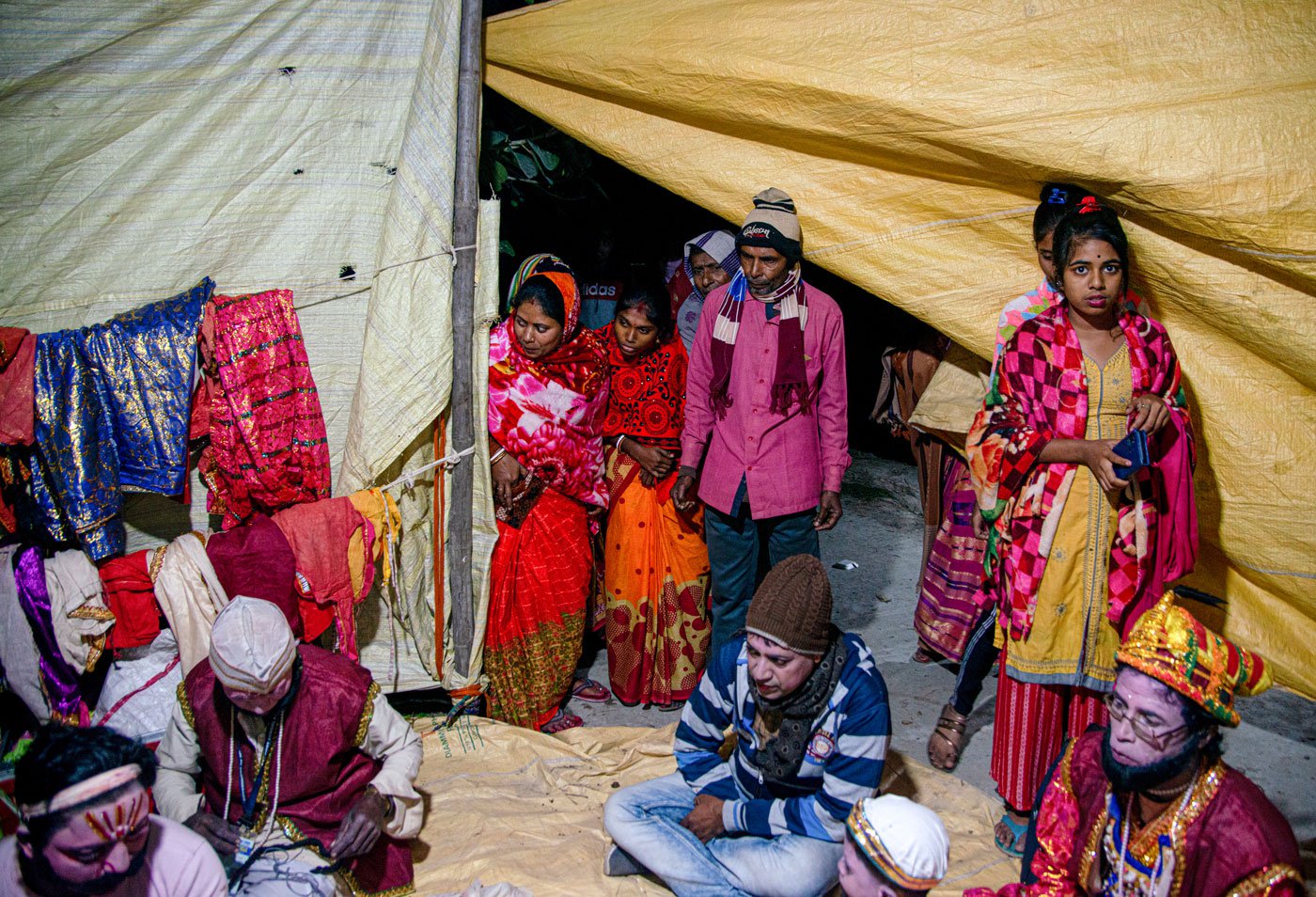
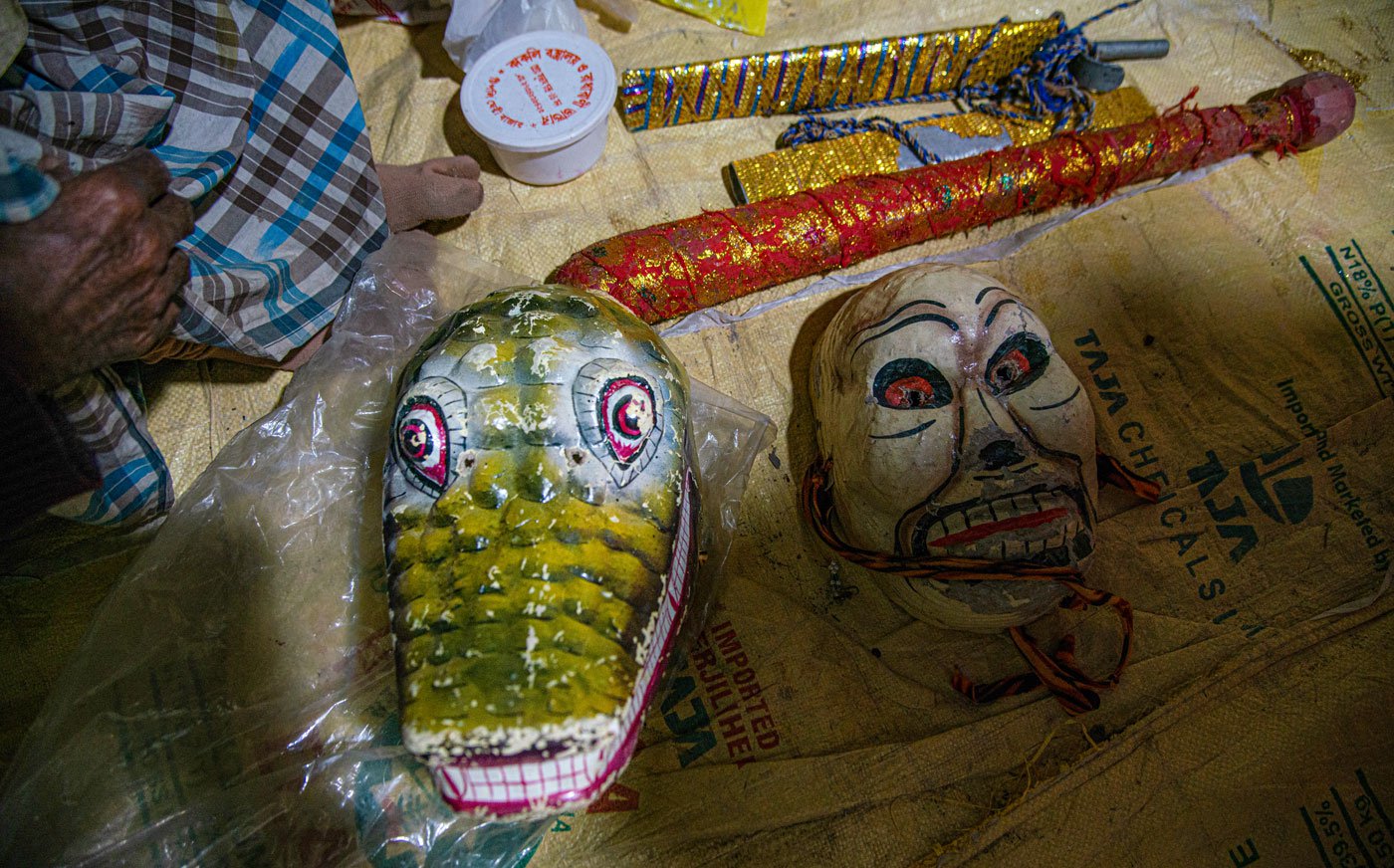
Left : Audience members in the green room, keenly watching the actors put on make-up. Right: Modelled on animals, these masks will be used by the actors essaying the roles
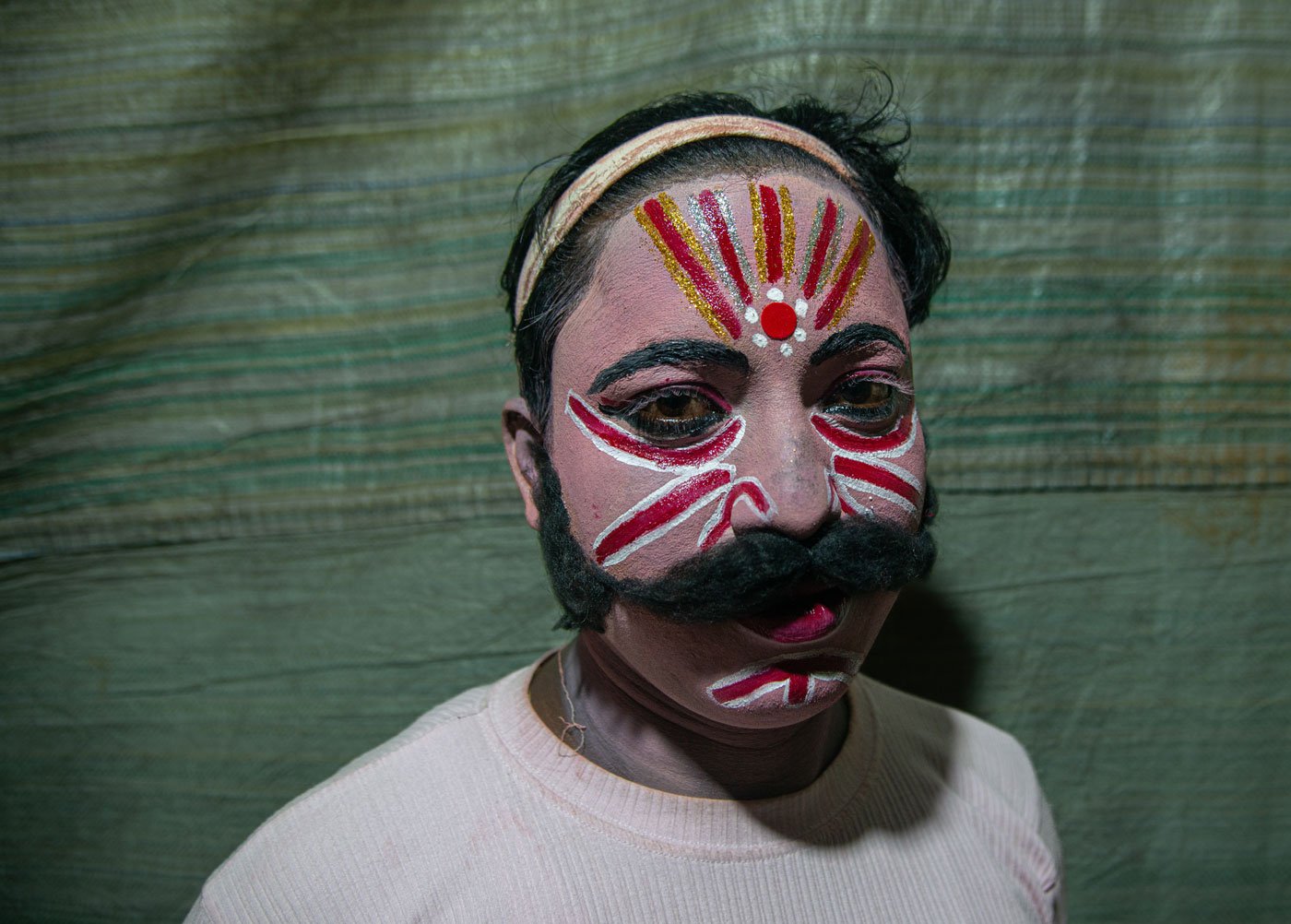
Portrait of Dilip Mandal in his attire of Dakkhin Rai
A Bonbibi show may cost the organisers Rs. 20,000, of which Rs. 12,000 goes to the troupe and the rest is spent on hiring loudspeakers and setting up the stage. Despite the shrinking incomes from performances, Bonbibi pala gaans have survived with the active encouragement, participation and monetary contributions of locals who come together every year to put up shows.
Meanwhile, the stage has been set, the seating area jam-packed, the music picks up tempo and it’s show time!
“With the blessings of Ma Bonbibi, we are starting the show based on a script by poet Jasimuddin,” announces Usharani. The crowd which has been waiting patiently for hours turns attentive and stays hooked for the next five hours.
Prayer songs dedicated to the deities Ma Bonbibi, Ma Manasa and Shib Thakur set the tone for the rest of the evening. Dilip Mandal is a prominent
pala gaan
artist in the Sundarbans and he plays the part of Dakkhin Rai – a shapeshifter who often morphs into a tiger.
The part where Dukhey, a young boy is rescued by Ma Bonbibi from the clutches of Dakkhin Rai, moves many in the audience to tears. Between 1999-2014, 437 people entering or crossing the forests were injured by tigers in the Sundarbans. With the threat of attacks by tigers looming over each venture into the forest, locals identify closely with Dukhey’s fears, eager for the blessings of Ma Bonbibi.
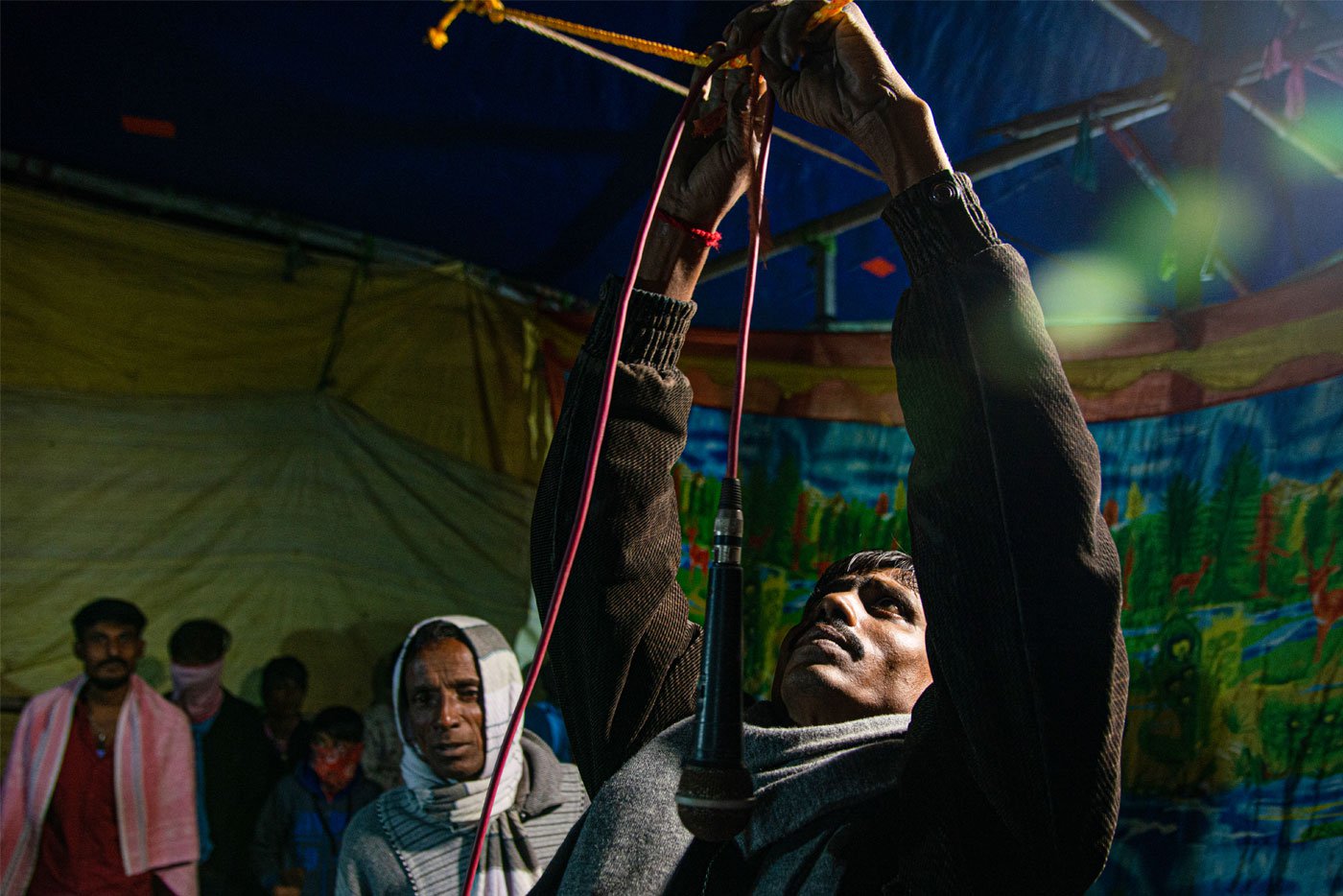
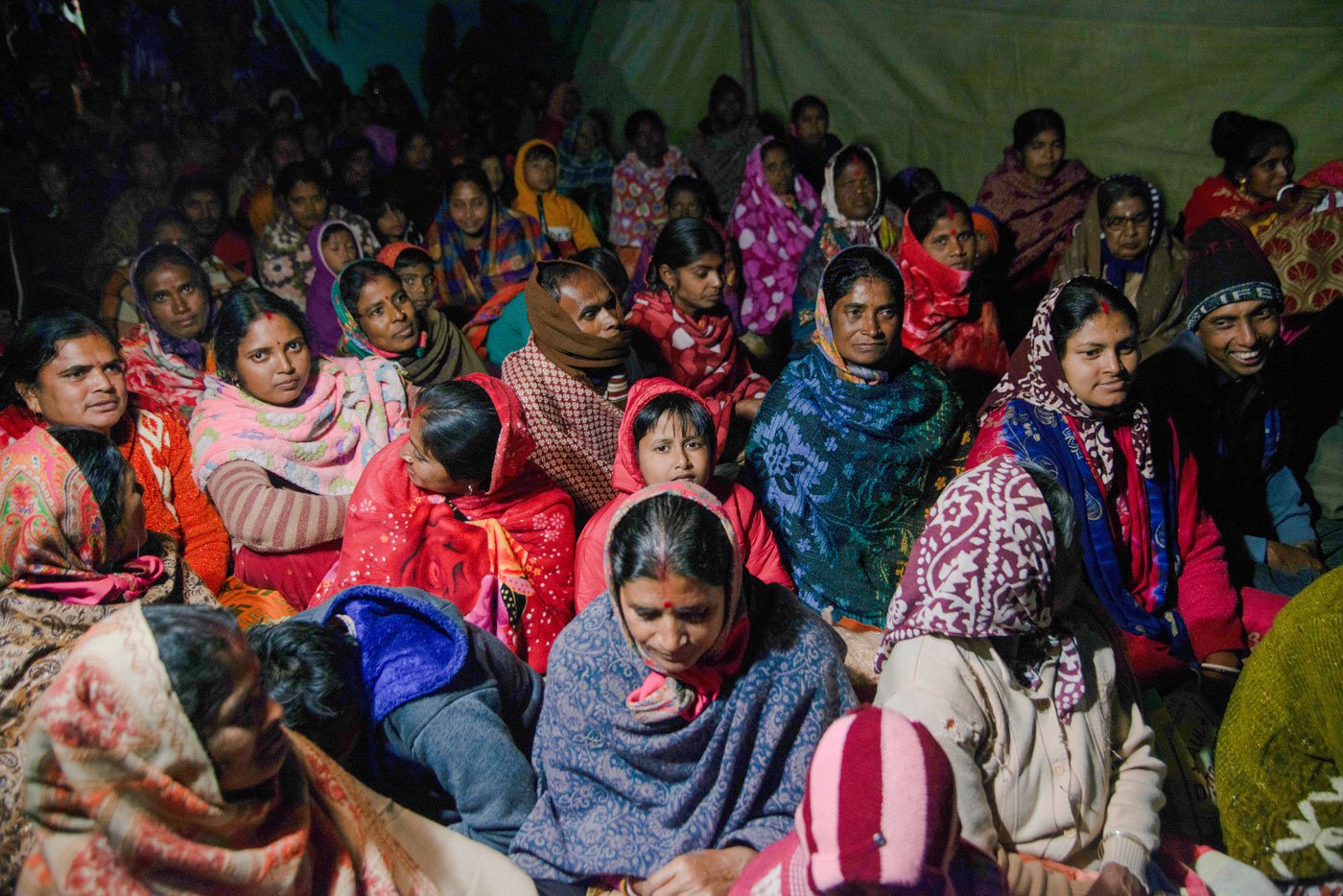
Left : A technician fixing a mike on the stage. Right: A packed crowd of close to 400 people wait for the performance to begin
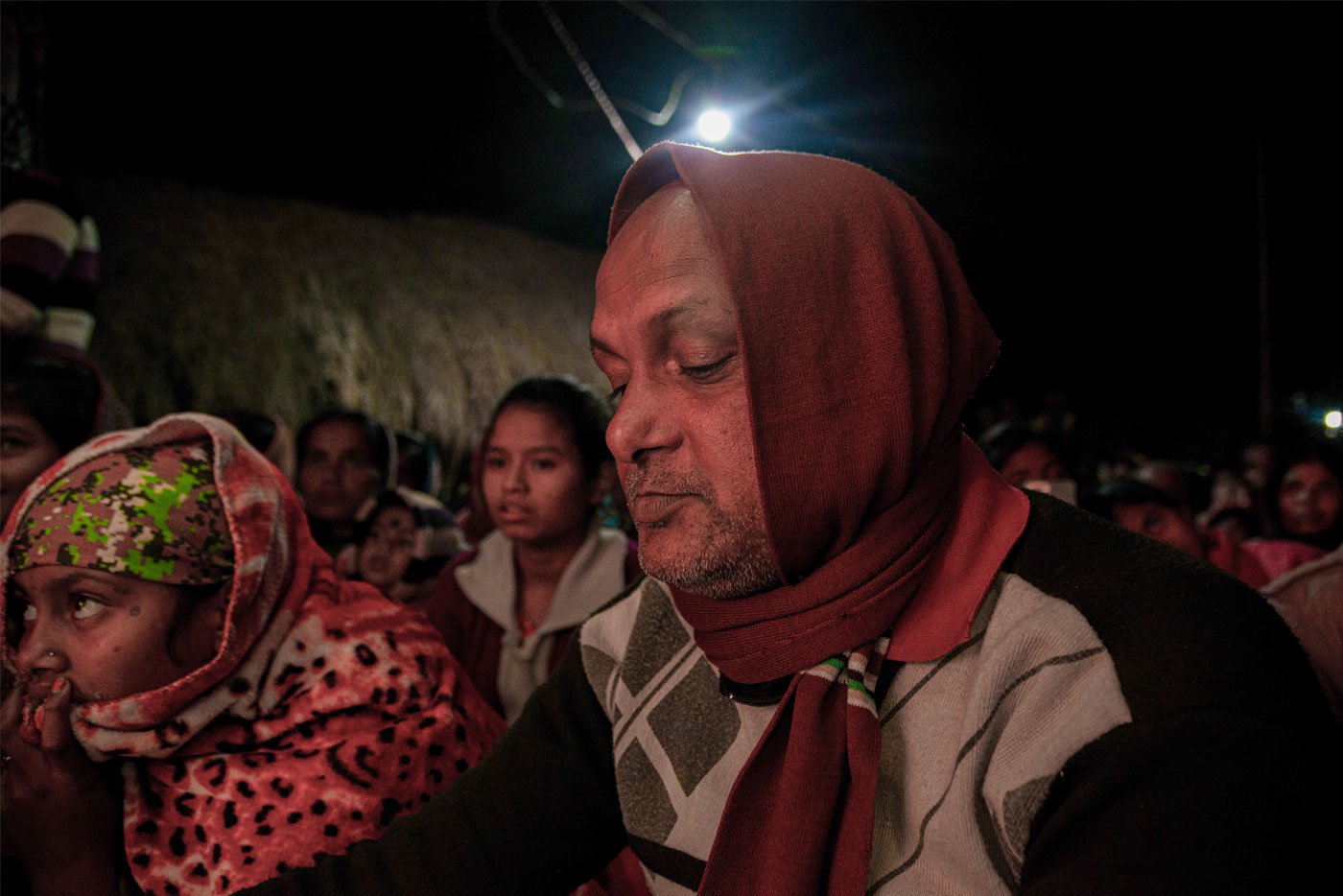
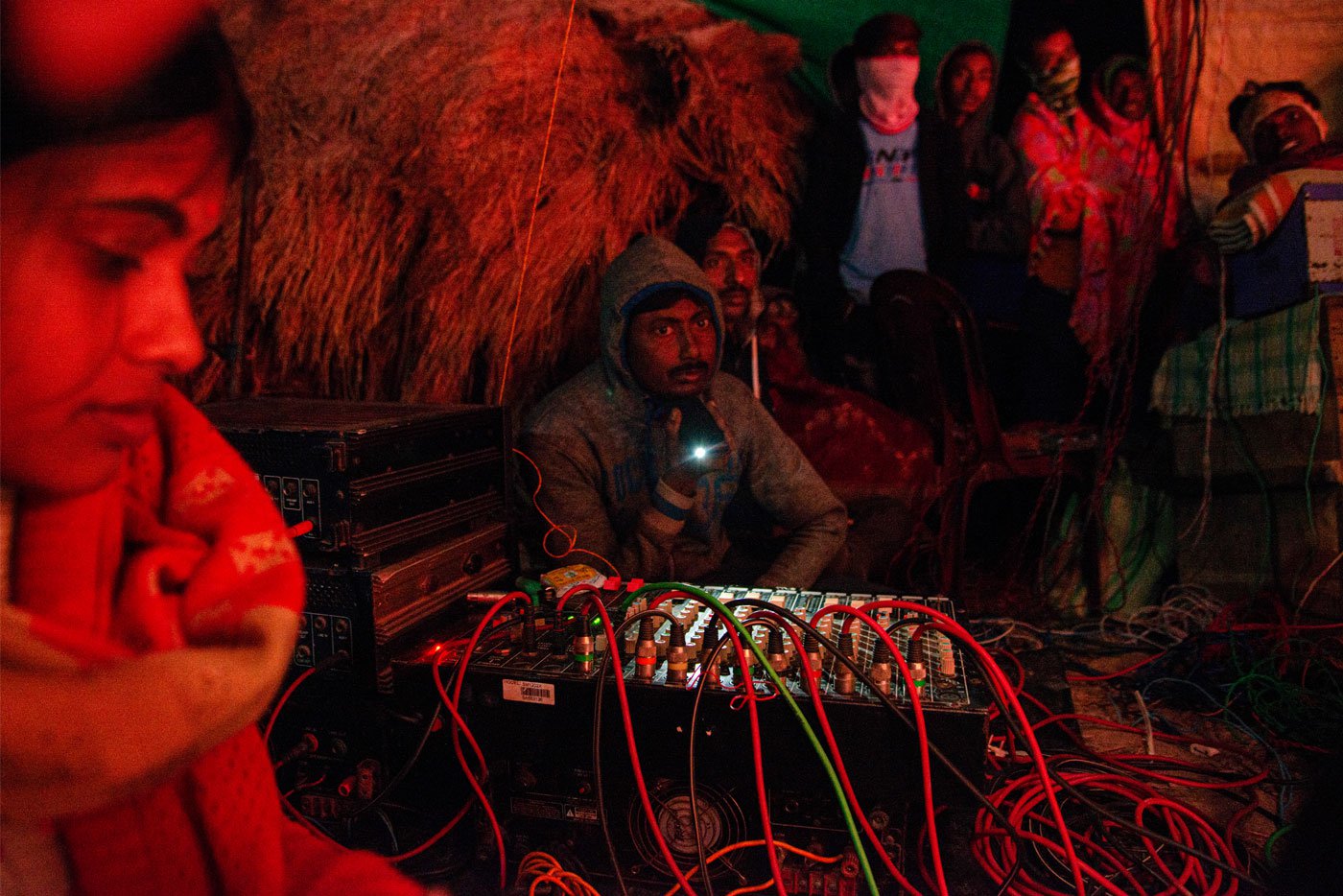
Left : Jogindra Mandal, the manager of the troupe, prompts lines when needed. Right: The pala gaan is interrupted several times due to technical glitches and so a technician sits vigilant at the console
Suddenly, a voice from the crowd screams, “Why is the mikeman such an idiot! We have not been hearing a thing for the past few minutes.” The performance pauses as technicians rush around fixing the wires. The actors get a short break and the show resumes in 10 minutes after the technical glitch has been fixed.
Jogindra Mandal, the manager of the Jatrapala troupe is sitting in front of the stage – positioned in such a way that he can prompt actors who forget their lines. He too is unhappy with the declining demand of
pala gaans
: “Where are the bookings? Earlier, with one show after another we hardly had any time. It's all gone now.”
Unable to rely on these incomes, managers like Jogindra are finding it hard to induct people into the troupe. He says he has had to rally actors from far-off places. “Where do you even get actors now? Actors for
pala gaans
have all turned labourers.”
Meanwhile, the hours have sped by and the Bonbibi
pala gaan
has entered its last act. I manage to speak to Usharani again. In addition to
pala gaans
, she performs
kathas
based on the Ramayana in different villages across Gosaba block. But she doesn’t have a steady income. “Some months, I earn Rs. 5,000. Other months, nothing.”
“In the last three years, we faced cyclones, the Covid-19 pandemic and lockdowns,” Usharani says. Despite these odds, "We did not let pala gaans die," she adds, packing up only to begin the act afresh next year.
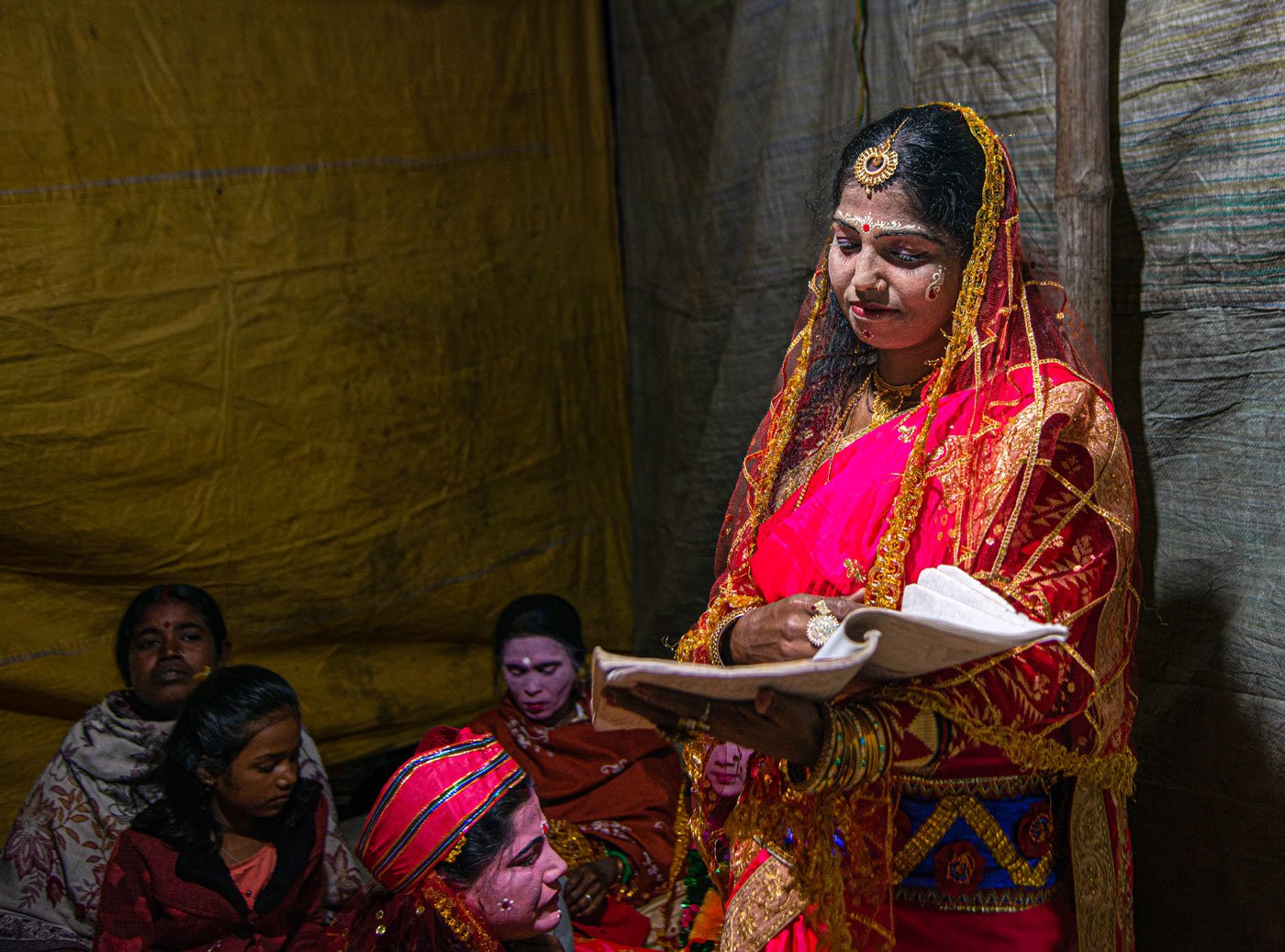
Usharani going through her scenes in the makeshift green room
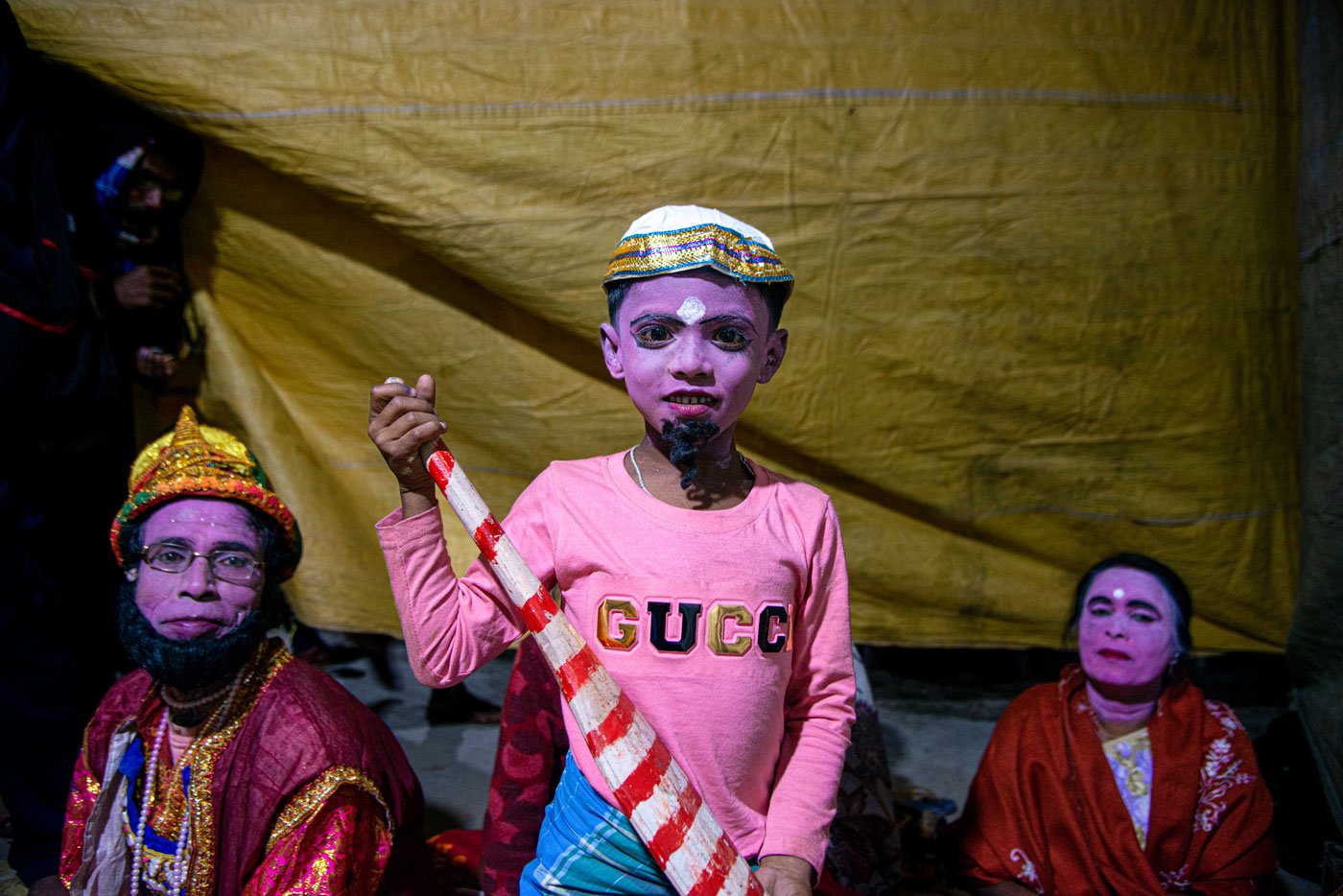
Actor Bapan Mandal poses with a plastic oar, all smiles for the camera
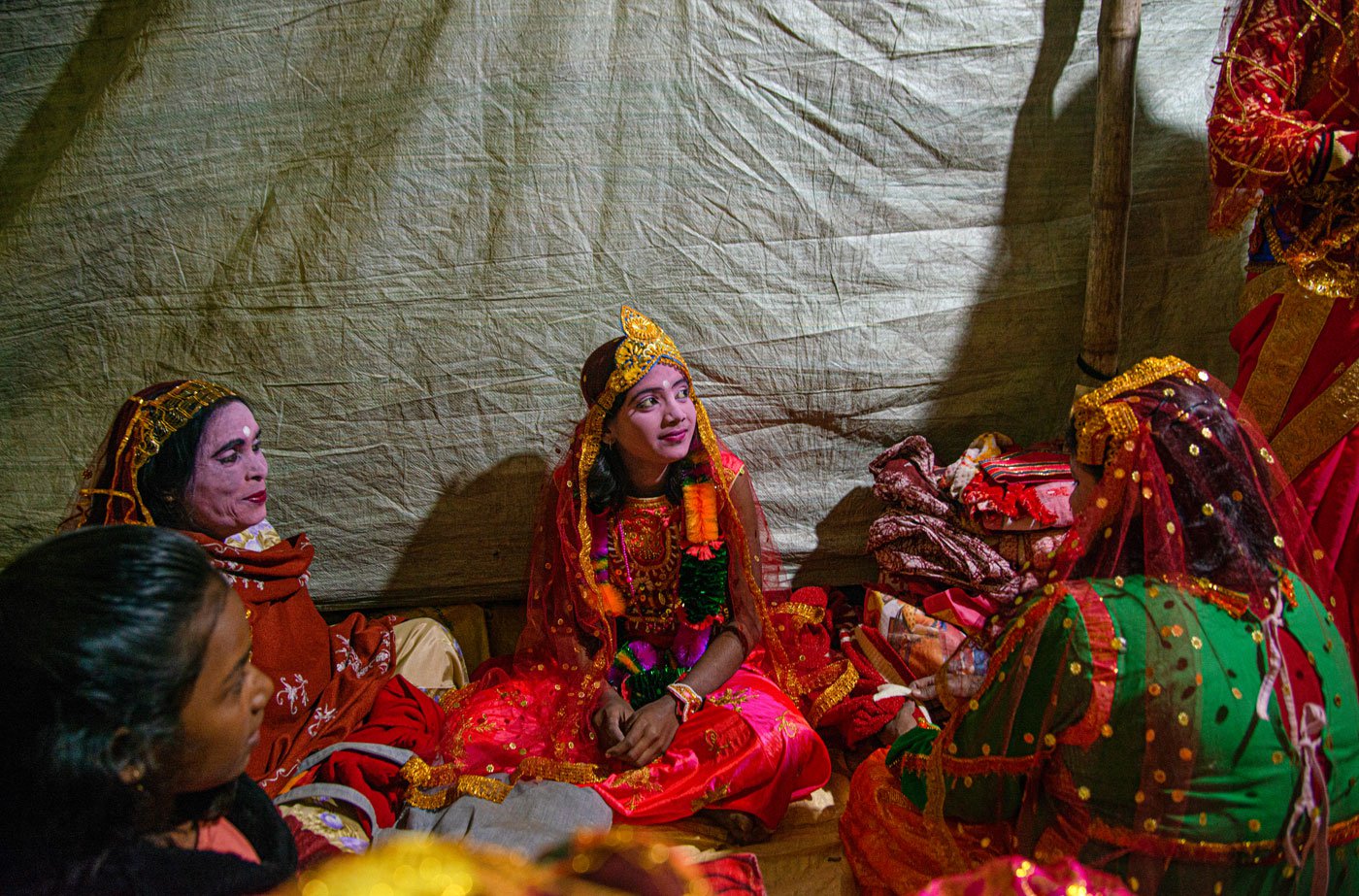
Rakhi Mandal who plays the role of young Ma Bonbibi and Dukhe, interacting with her co-actors
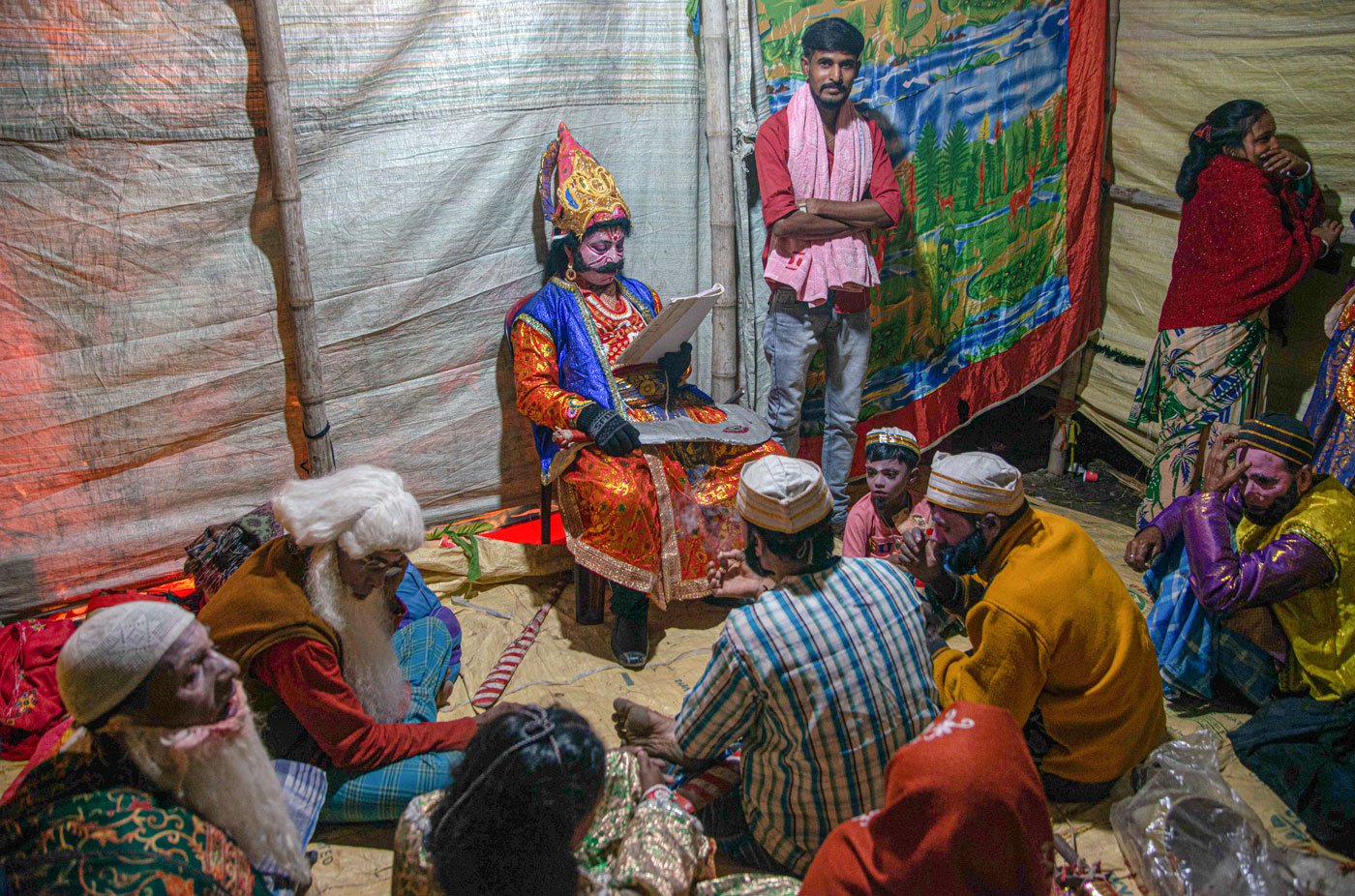
The actors rehearse their lines in the green room. Dilip Mandal sits in a chair, sword in hand, waiting for his cue to enter the stage
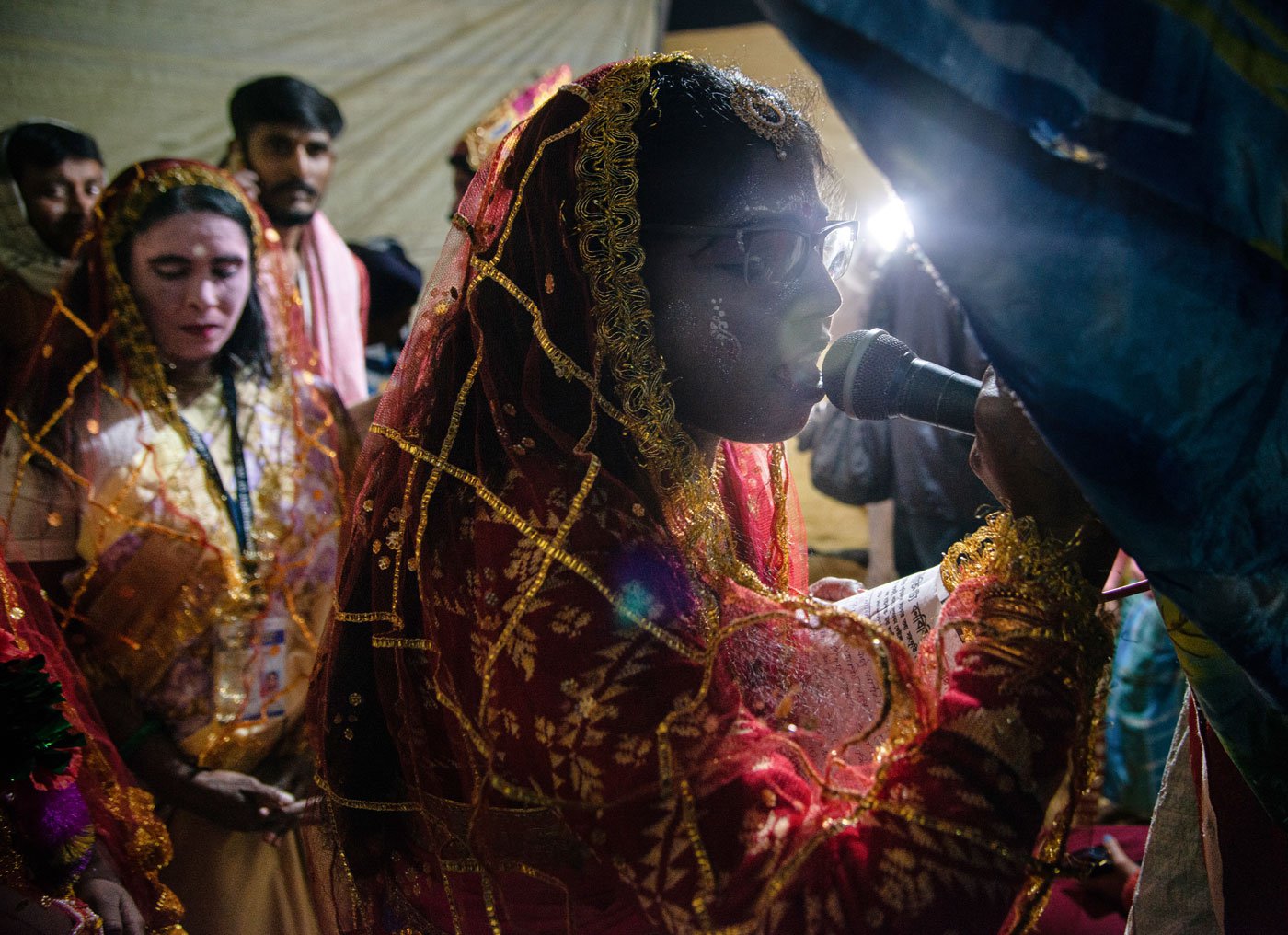
Usharani Gharani announcing the commencement of the pala gaan
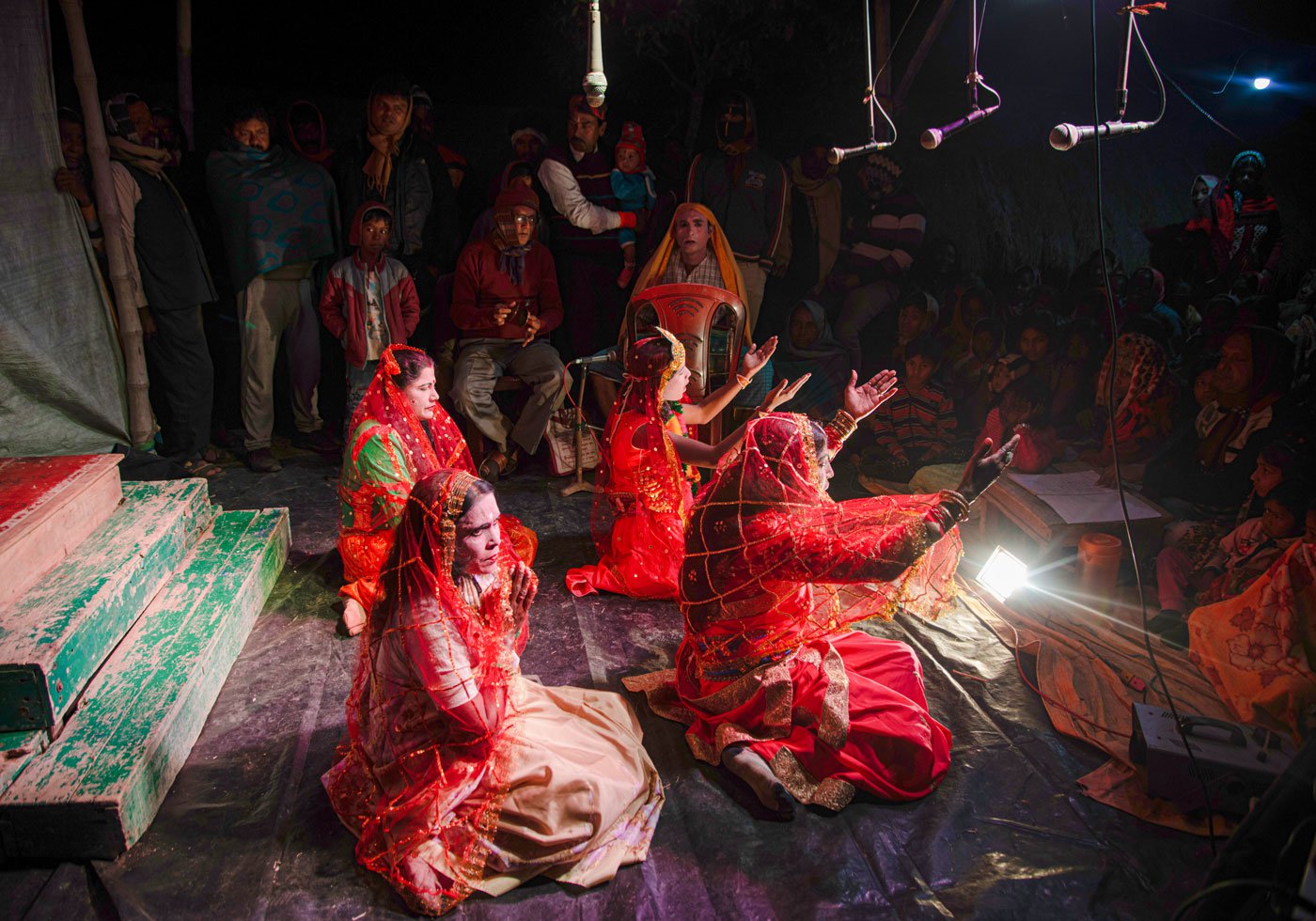
Artists begin the pala gaan with prayers dedicated to Ma Bonbibi, Ma Manasa and Shib Thakur
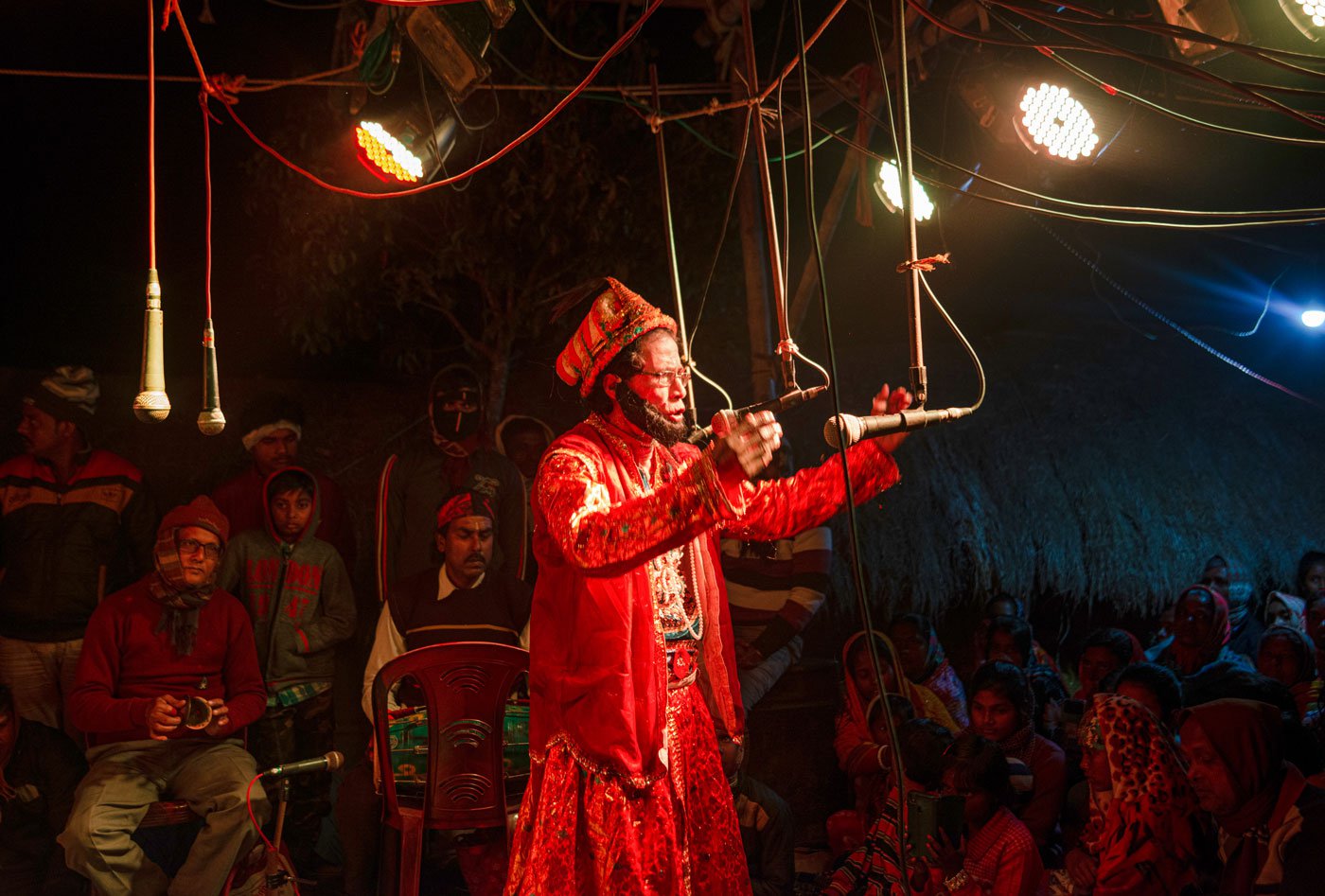
Actor Arun Mandal plays the role of Ibrahim, a fakir from Mecca
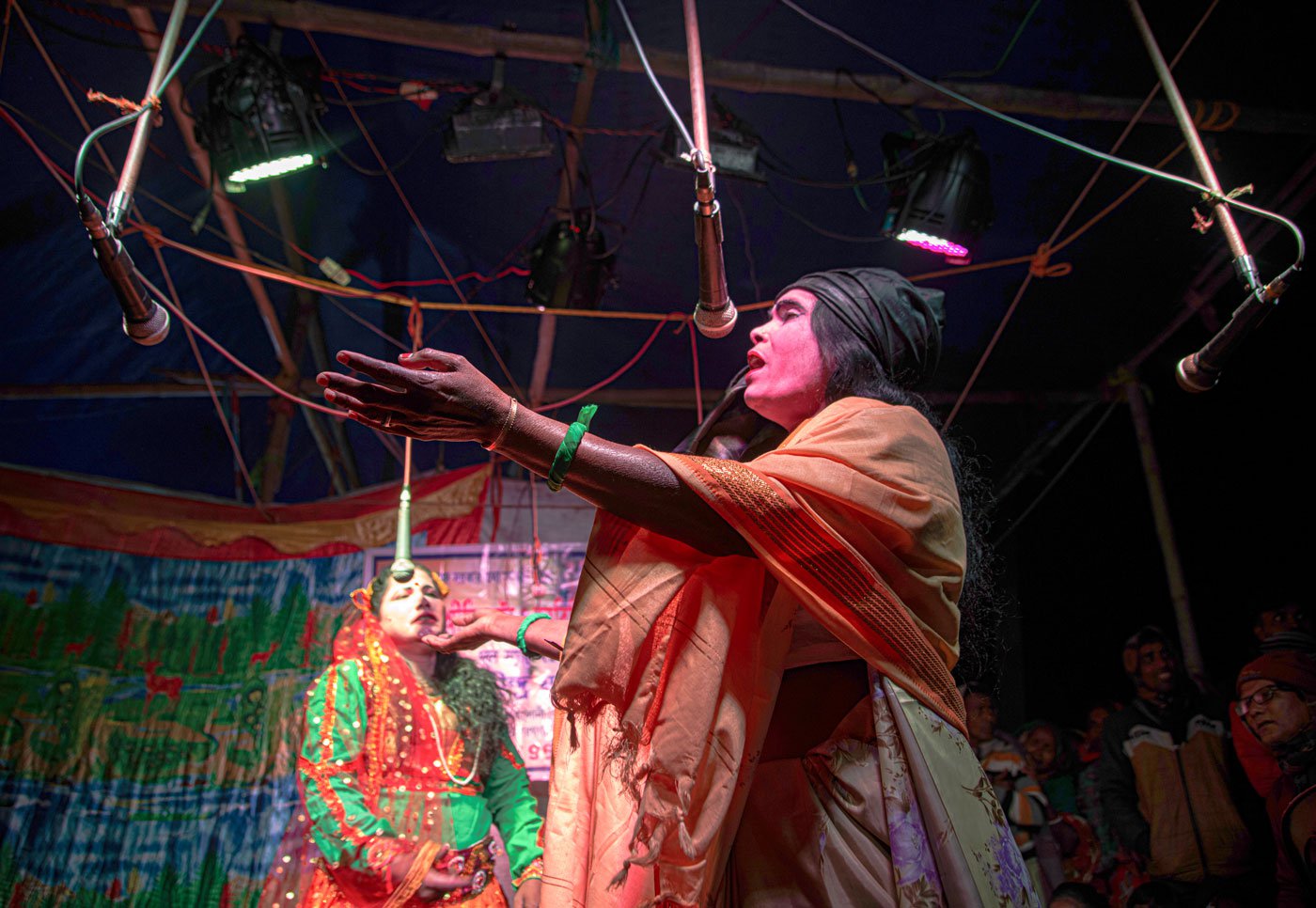
Actors perform a scene from the Bonbibi pala gaan . Golabibi (in green) is compelled to choose between her two children, Bonbibi and Shah Jangali. She decides to abandon Bonbibi
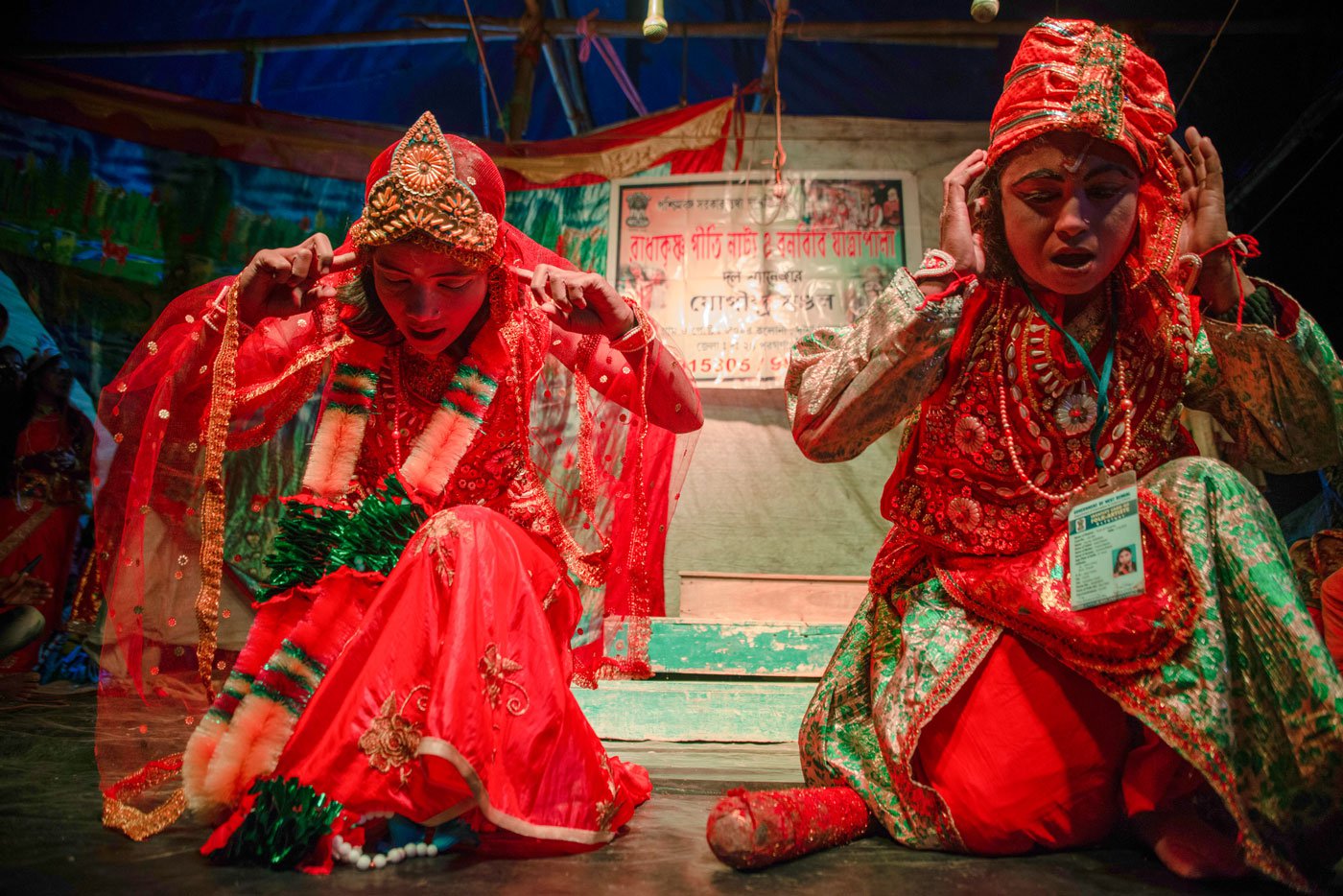
Rakhi Mandal and Anjali Mandal play the roles of young Bonbibi and Shah Jangali
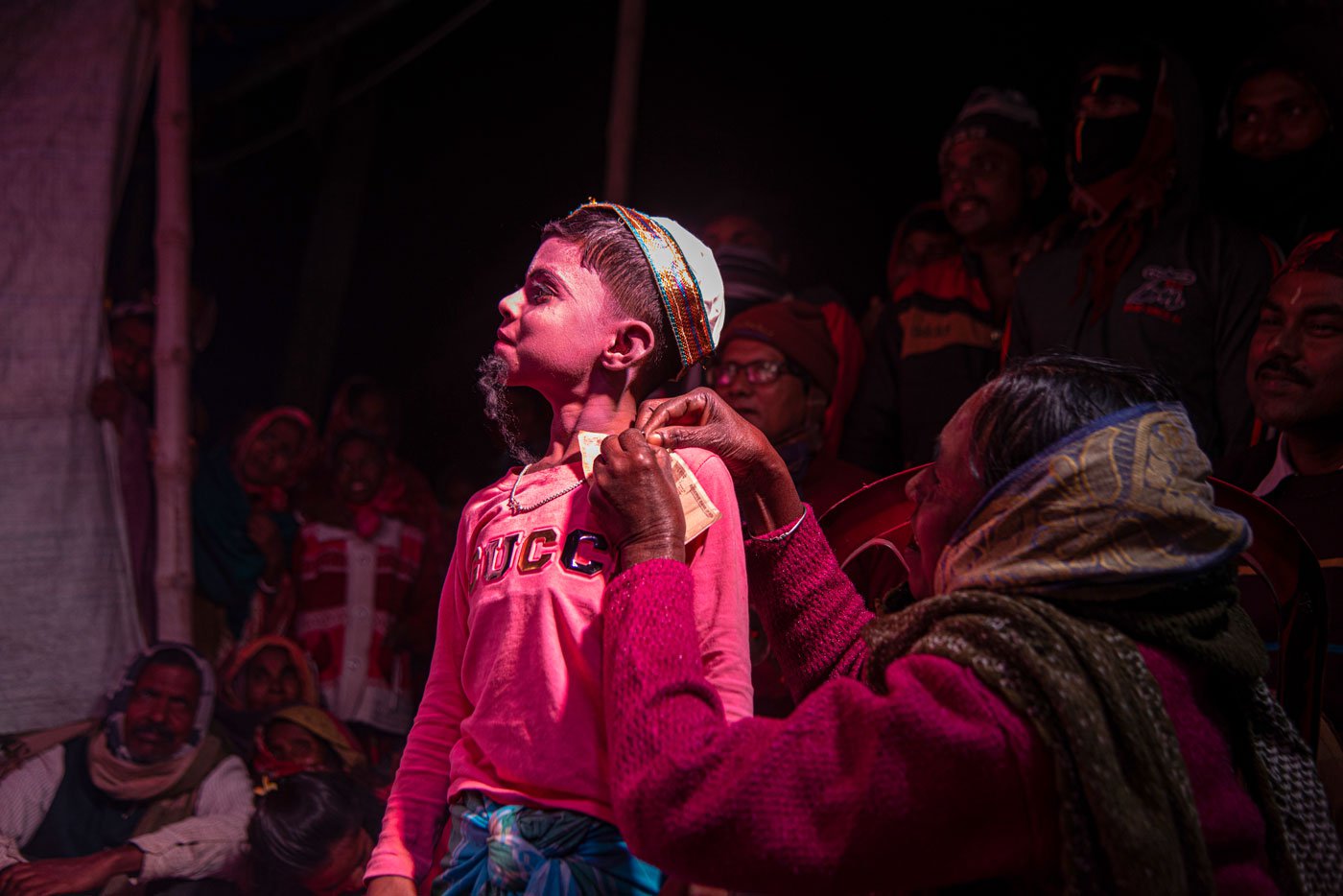
Impressed by the performance of Bapan Mandal, a elderly woman from the village pins a Rs. 10 note to his shirt as reward
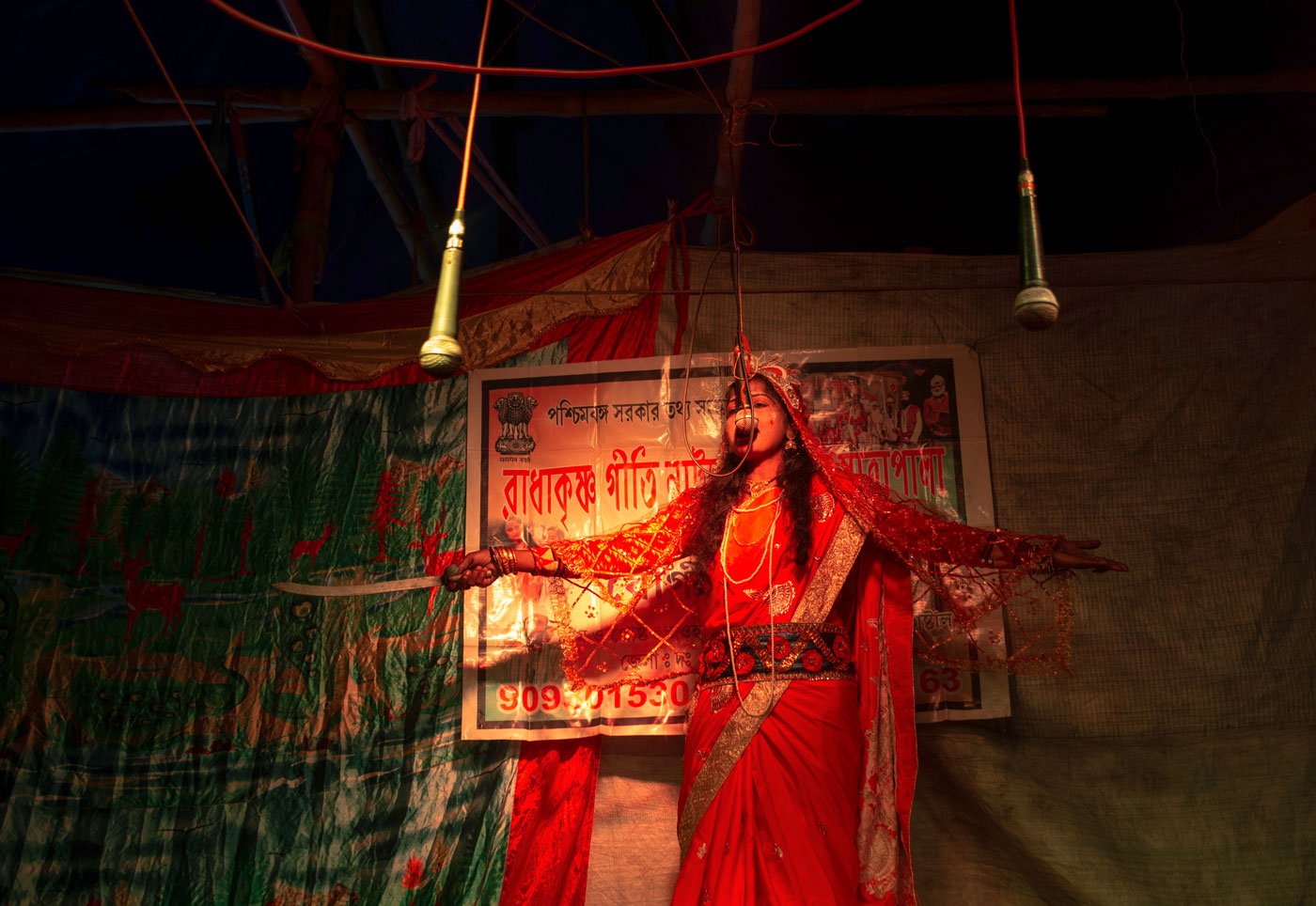
Usharani delivers her lines as Narayani, the mother of Dakkhin Rai. In the pala gaan , she also plays the roles of Bonbibi and Fulbibi
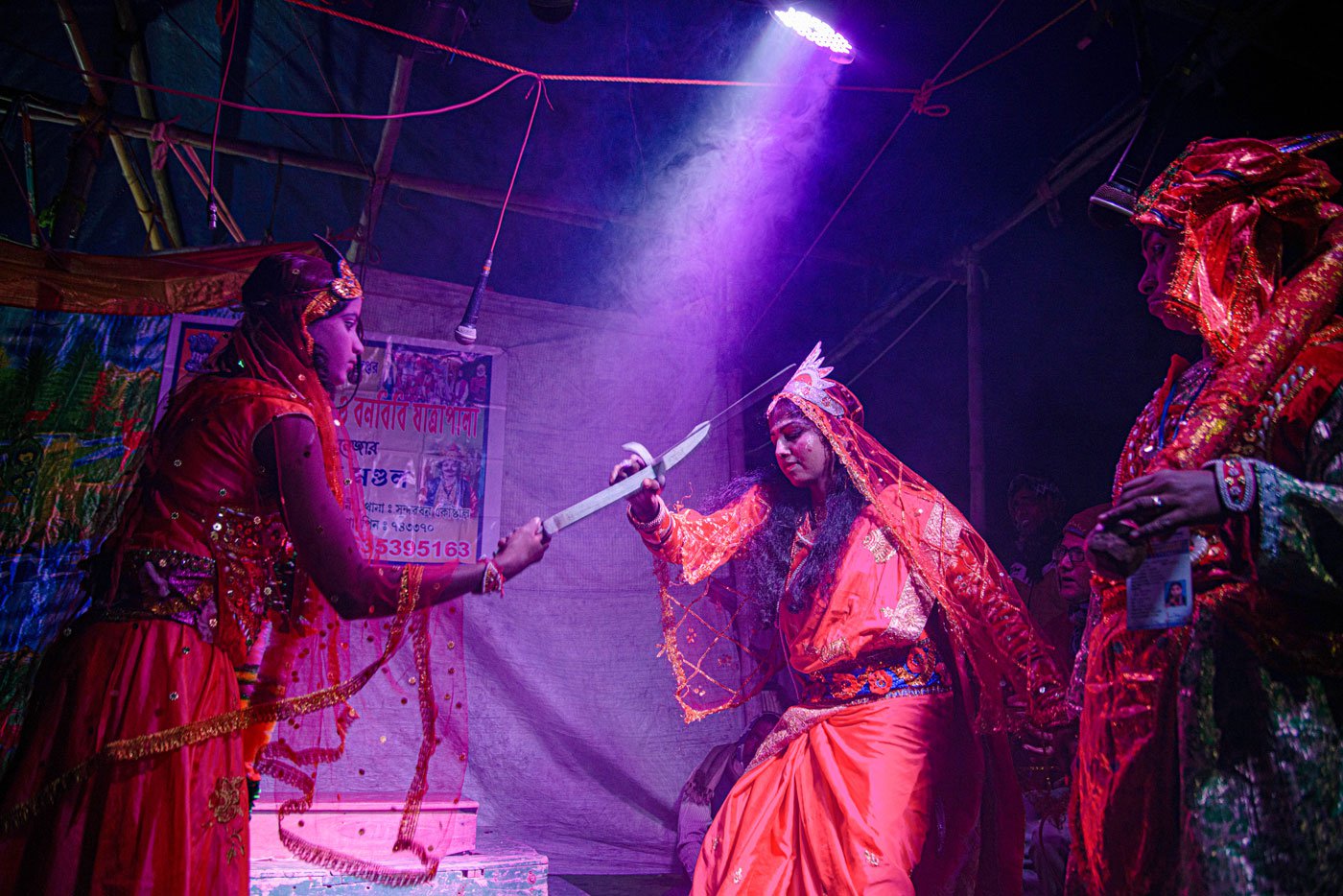
Actors play out a fight scene between young Bonbibi and Narayani
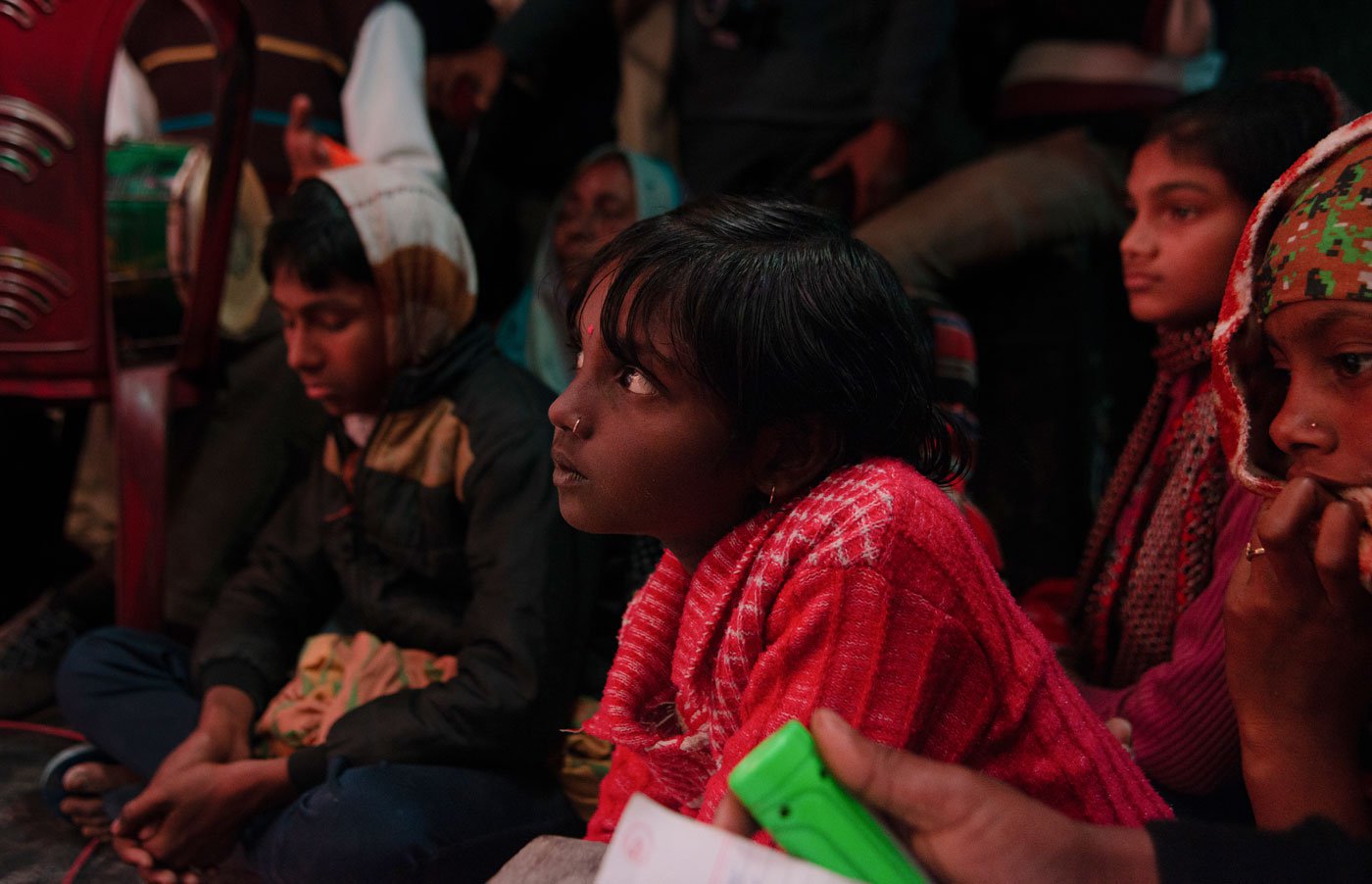
A child from Jawahar Colony village in the audience is completely engrossed in the show
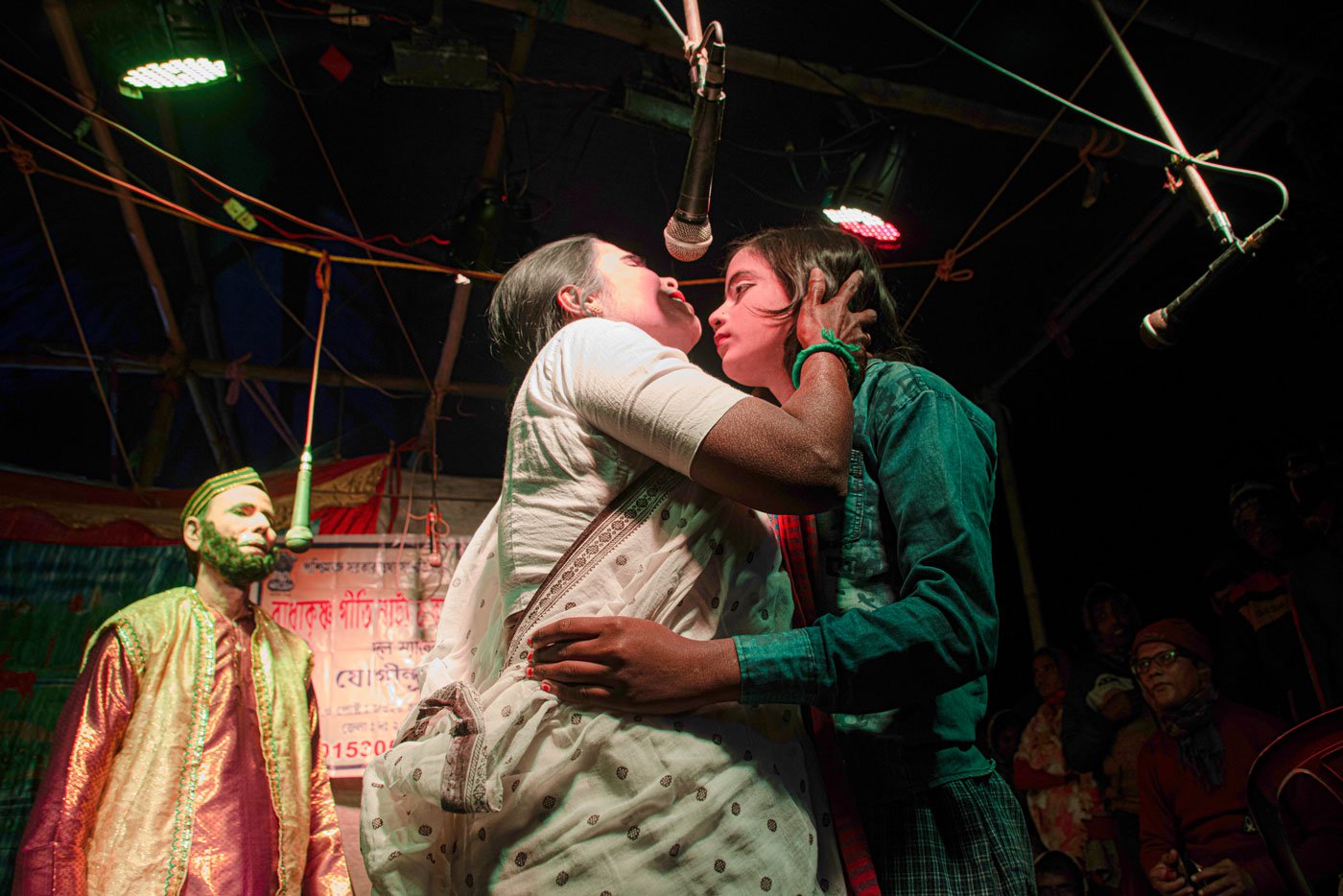
Bibijaan bids farewell to her son, Dukhey as he accompanies Dhana, a businessman into the forest to learn the trade of collecting honey. Many in the audience are moved to tears at this scene
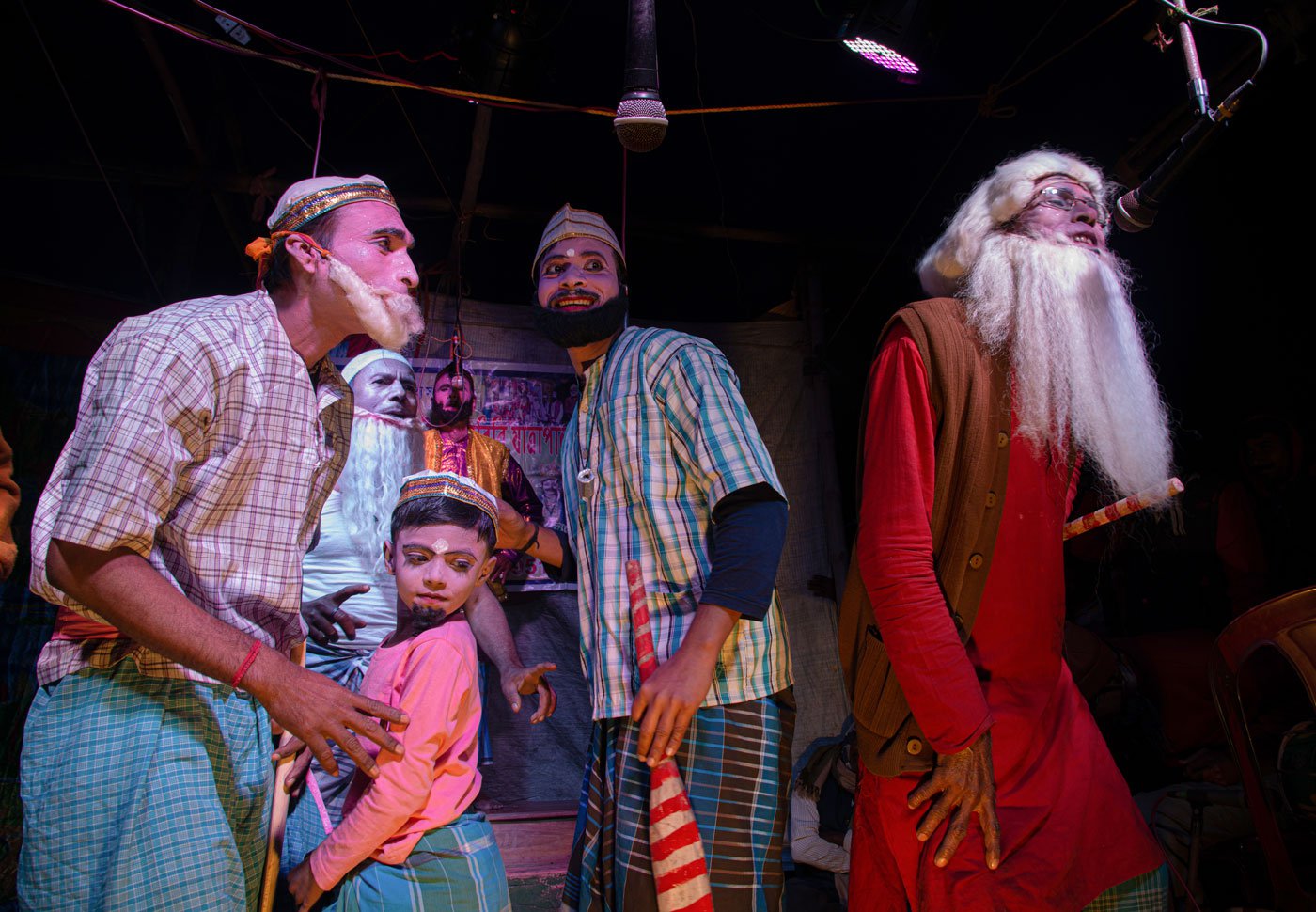
Boatmen take Dukhey into the jungle laced with dangers
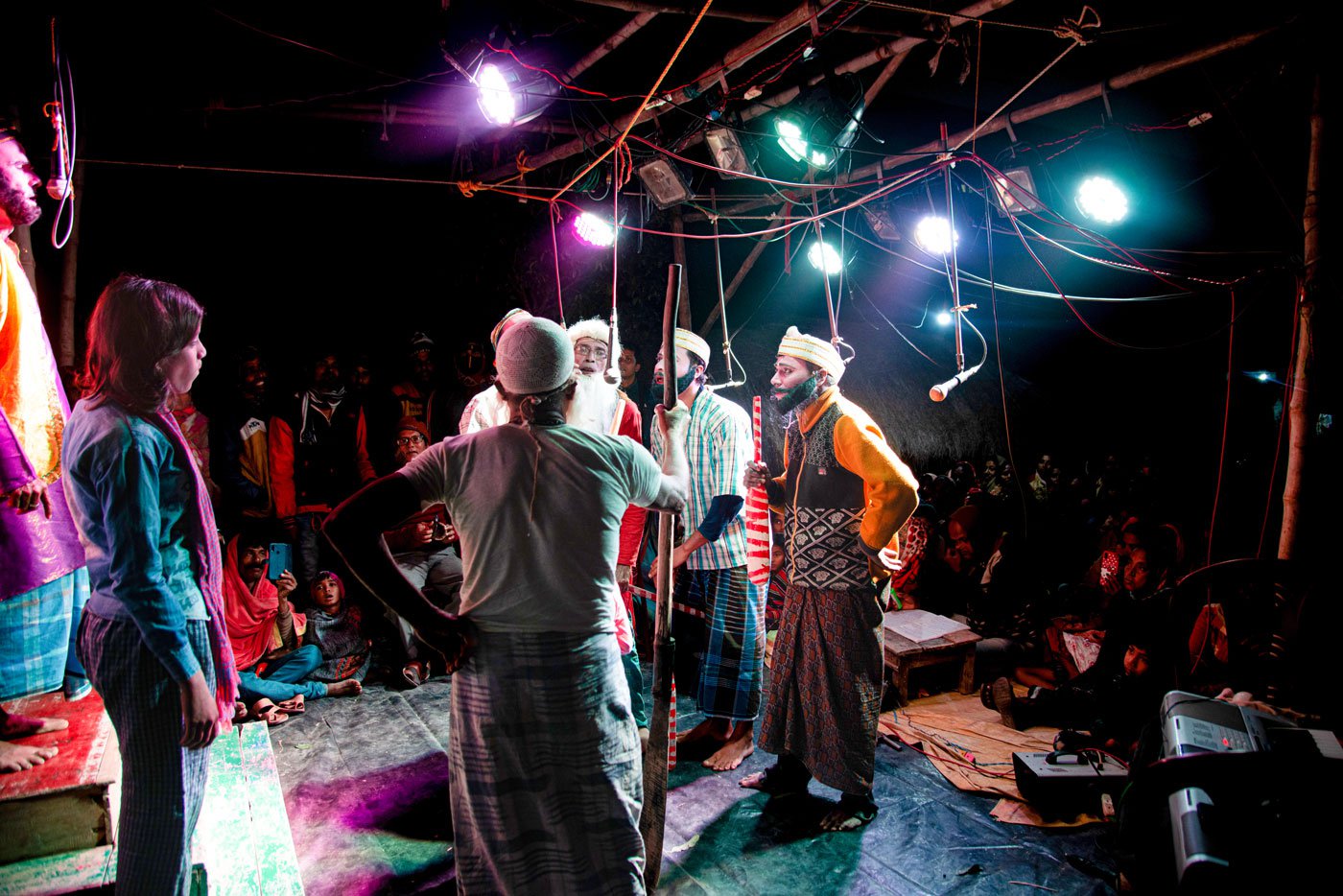
Boatmen and Dhana strategise on how to get honey from the forest
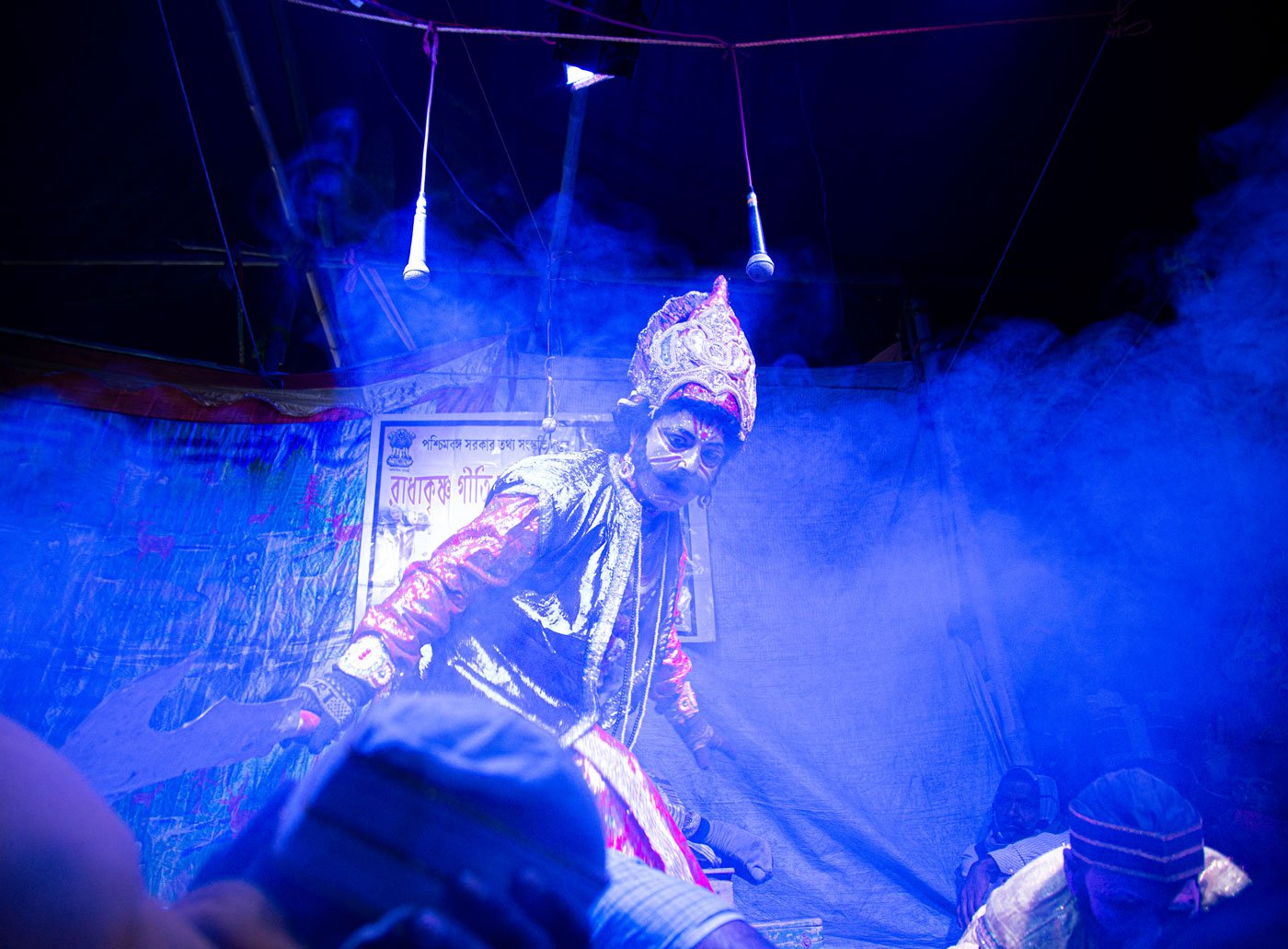
A scene from the pala gaan where Dakkhin Rai appears in the dream of Dhana, asking him to sacrifice Dukhey as his kar (tax). Only then would he find honey in the forest
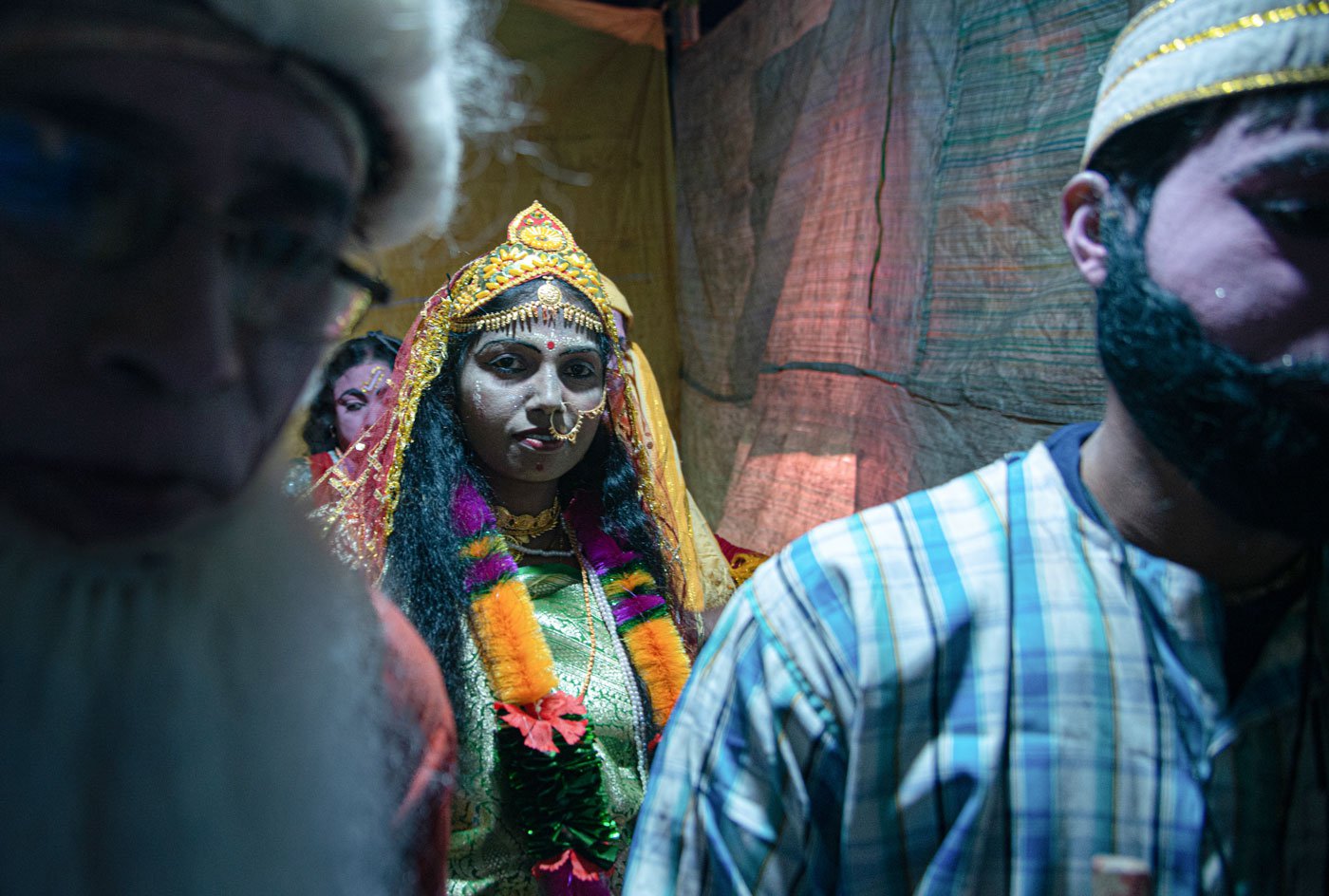
Usharani Gharani, looking ethereal, enters the stage dressed as Ma Bonbibi
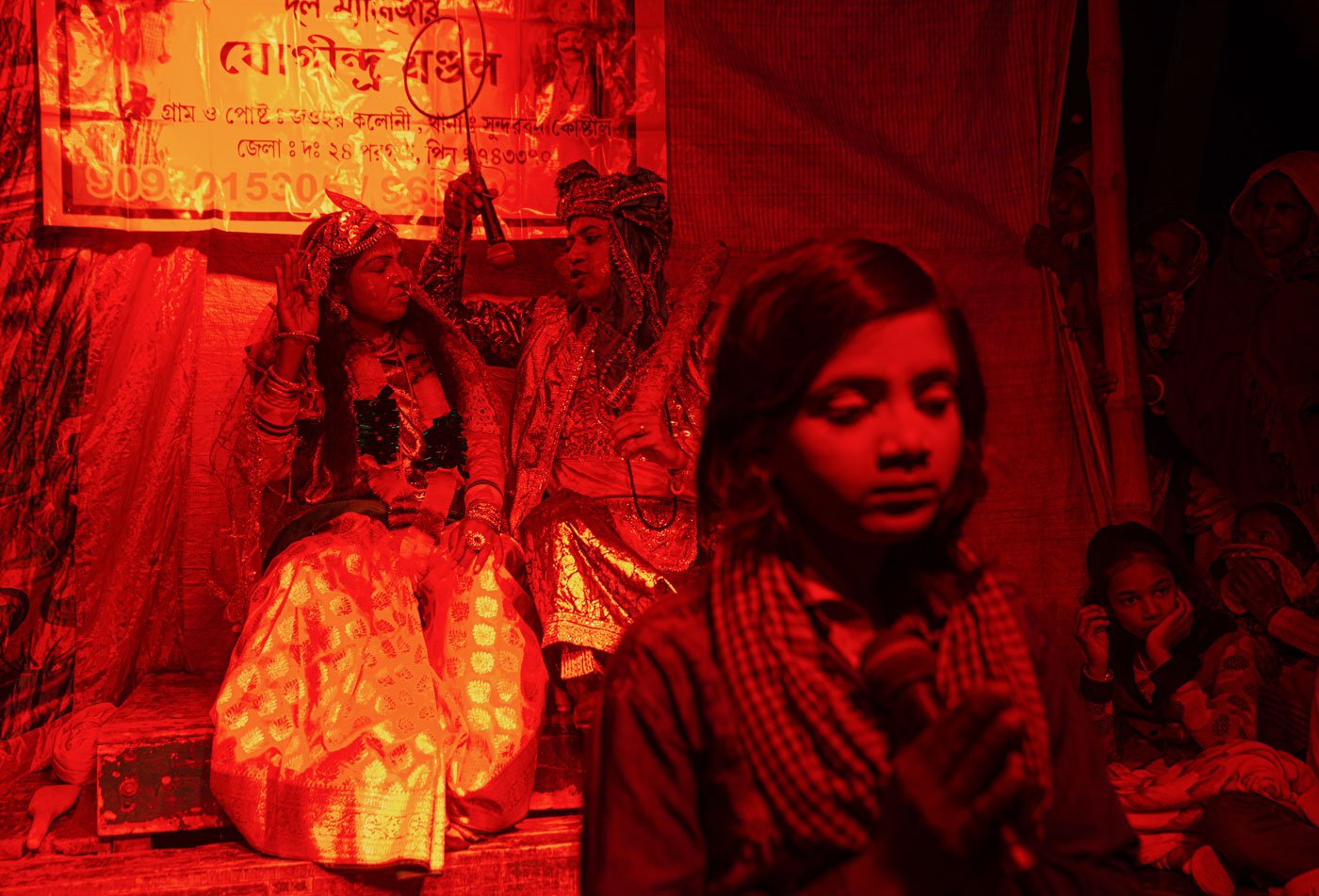
In the forest, an abandoned Dukhey prays to Ma Bonbibi, to save him from Dakhin Ray. Ma Bonbibi grants his wish, defeats Dakhin Roy and safely returns him to his mother Bibijaan. Dukhey is also blessed with large amounts of honey which make him comfortably rich
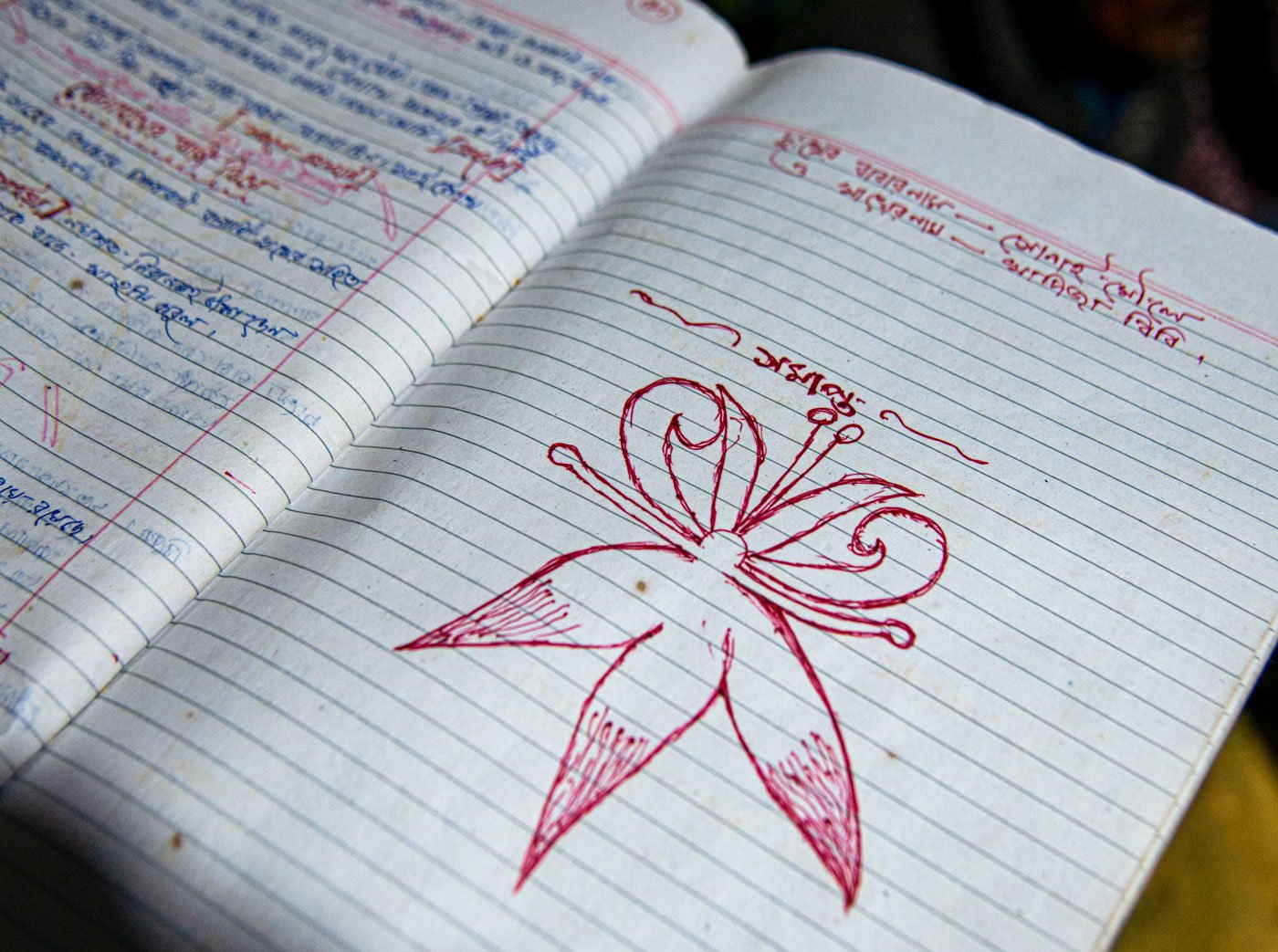
A butterfly motif, and the word 'Samapta' ('The End' ) marks the conclusion of the script
